#archbishop roberts
Explore tagged Tumblr posts
Text

Archbishop Roberts, s.j. - Diary of Bathsheeba - Sands & Co. - 1970 (Thomas d'Esterre Roberts)
#witches#archbishops#occult#vintage#diary of bathsheeba#sands & co.#diary#bathsheeba#archbishop roberts#societatis jesu#thomas d'esterre roberts#1970#bible
19 notes
·
View notes
Text
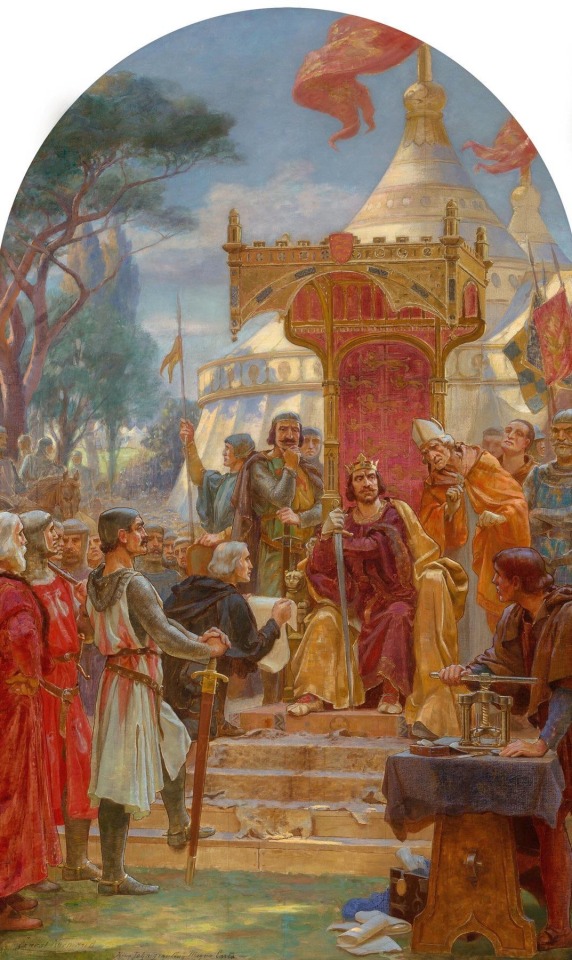
King John granting the Magna Carta at Runnymede, on the bank of the River Thames near Windsor, England, 15 June 1215
by Ernest Normand
#king john#magna carta#art#ernest normand#england#runnymede#windsor#river thames#medieval#middle ages#history#barons#monarch#king#john#english#norman#earl of pembroke#robert fitzwalter#archbishop#stephen langton#cassell's history of england#knights#europe#european#royal#royalty#monarchy#liberty#tent
243 notes
·
View notes
Text
Images below the cut, I got the least scary art of all of them (eg none of them are in their "final form" horror creatures)
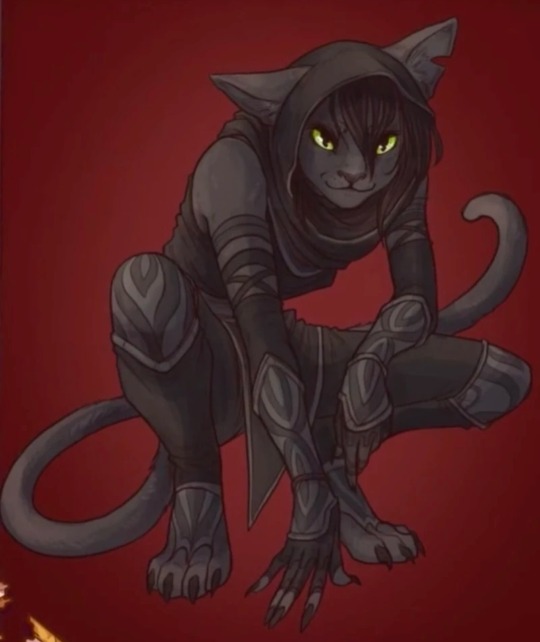


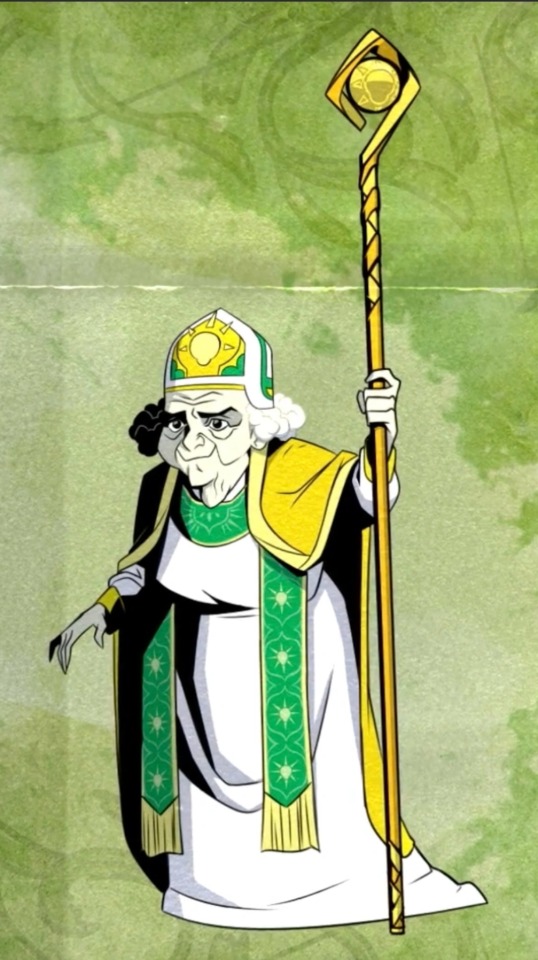


#d20#d20 poll#polls#d20 memes#fantasy high#junior year#neverafter#the ravening war#burrow’s end#misfits and magic#carlos luna#aabria iyengar#kalina#baron from the baronies#the stepmother#camille colliflour#archbishop camille colliflour#dr wenabocker#robert wenabocker#evan kelmp#brennan lee mulligan#dimension 20#horror
53 notes
·
View notes
Text
History of Harold's Cross, Dublin
One explanation of the origin of the name Harold’s Cross is that it is derived from the name given to a gallows, which had been placed where the current Harold’s Cross Park is situated. Harold’s Cross was an execution ground for the city of Dublin during the 18th century and earlier. In the 14th century the gallows there was maintained by the Archbishop. Harold’s Cross stands on lands which…
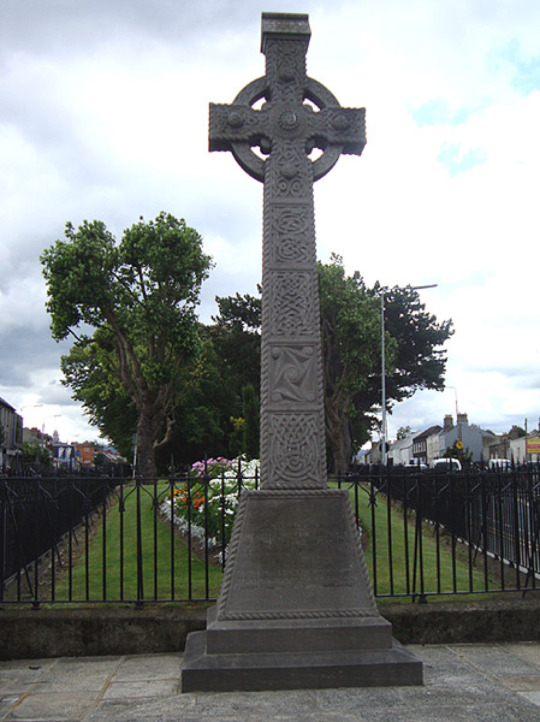
View On WordPress
#1798 United Irishmen Rebellion#1916 Volunteers#Archbishop#Dublin#Gallows#Harold&039;s Cross Green#History#History of Ireland#Ireland#Irish History#Kimmage#Mount Argus Church#Padraig Pearse#Rathfarnham#Rathmines#Robert Emmet#Sarah Curran#The Pale#Whitechurch
13 notes
·
View notes
Text
Thinking about Monica's Supreme Support and the Hresvelg Artistic Skills -
HC it was passed on, like the Armstrong Artistic Sense, in generations of successive Hresvelgs, starting from the dawn of the Empire.
Chronics record a particular Saturnalia, where the not yet Emperor Lycaon offered a sigilliaria to Saint Seiros made in wax, that was noted by the writer to be spectacularly unremarkable, in his words, a "slab of wax".
Chronicers use this event to praise Saint Seiros's kindness and generosity, turning this subpar gift in an occasion to praise and encourage the young prince to continue working on his craftsmanship, and graciously accepted the figurine that was supposed to be a duck.
(this event was rumored to be the source of an old Adrestian tradition, to offer duck figurines to people during the Winter Festival, and later changed to eat duck for Winter Festival meals).
The tradition died out in Adrestia, nobles and well off Adrestian living in Enbarr prefer to eat pheasants and wax/clay figurines of old are now replaced with porcelain figures or jewels (for the ones who can afford them !).
Of course, the Adrestian fondness for ducks (and other birds ?) was mocked by the newly installed Faerghians, mocking them for loving ducks, aka food, when their sigil is a roaring lion.
Until Robert the Bold, Loog's great grand-nephew and fourth King of Faerghus, was biten by a duck in the imperial palace while he was a guest invited for the wedding of his sister, wed to an Adrestian nobleman.
Wishing to apologise and build a future peaceful relationship with those people, even if they were barbarians, not quite yet Emperor Otto 3rd gifted him one of his precious paintings, as a sign of goodwill. The painting represented, per Adrestian records, a beautiful picture of the sunset setting on Enbarr.
To Faerghian historians, it was a bloody field and a thin veiled threat against the Kingdom.
The crisis was only averted by the intervention of the Archbishop of that time, who had also been invited, and authentified the painting as a sunset over Enbarr, and not blood pouring from everywhere in Firdhiad.
#Fodlan nonsense#Fodlan hc#Adrestia stuff#An Archbishop called the breed of ducks in the monastery 'wolf ducks'#No cardinal dared to ask her why#Adrestia got its share of dumb emperors#So of course the kingdom would get its own share of dumb kings#Robert the Bold was the one who tried to do something with the black water and burnt#The largest city in Dominic's territory#After healing the ones who could be healed Rhea issued a ban#fe16#is it wolf (fe16)'s hour?
6 notes
·
View notes
Text
An Abbey in Dublin Unearthed
Excavations in Dublin city centre have uncovered the remains of what was once one of Ireland’s most important medieval monasteries. St Mary’s was a House of Benedictines, followed by Savignac monks and then Cistercians, and it was exceedingly wealthy, with the added bonus of being permitted to claim goods from shipwrecks. At times, it was quite a troubled place–the mayor of Dublin, Robert de…
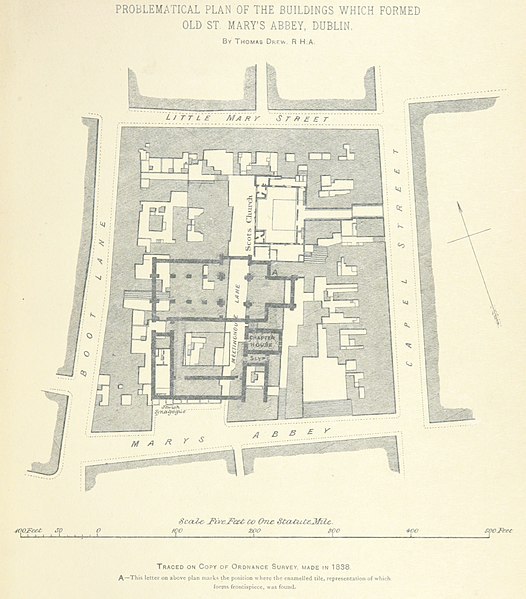
View On WordPress
#Archbishop of Dublin#bigamy#Dissolution of the Monasteries#Dublin#Earls of Ormond#Earls of Ulster#Earls of Wiltshire#Edward Bruce#Edward IV#executions#Henry VIII#Ireland#James Butler#John Earl of Shrewsbury#Lady Eleanor Talbot#Mael Sechnaill mac Maele Ruanaid#pre-contract#Richard Talbot#Robert de Nottingham#St. Mary&039;s Abbey#Towton#Walter Champfleur
0 notes
Text
Kings and Churchmen
Kings and Churchmen and why Kings of England needed the support of the Church to hold on to power if they did not have support of nobility
Today, I will be writing and discussing the importance of churchmen who supported kingship during the mediaeval ages, stretching from the fall of the Roman Empire in 476 CE to the discovery of America by Europeans in 1492 CE by Christopher Columbus. For this article, I will be discussing the kingship focus Kings of England, why churchmen were an essential pillar of Kings and a force for support,…

View On WordPress
#Archbishop of Canterbury Lanfranc#Battle of Lincoln#Christopher Columbus#Church and State#Cnut the Great#Earl Robert of Gloucester#English History#King Stephen of England#Kings of England#Lanfranc#William the Conqueror
0 notes
Text
okay i finished it! unfortunately, this book insisted on remaining true crime instead of morphing into a labor history. in typical true crime fashion, bradley presents a limited & deeply carceral view of 'justice,' which results in spending a really long time waxing rhapsodic about richard sprague, the prosecutor, & comparatively little time on the internal reforms in the UMWA. broader changes in the organizing environment for american labor are mentioned only in passing, which is frustrating! there's a line in there like 'the sentencing of tony boyle represents the end of an era in which people were willing to kill for american unions,' which bothered me as a summary of the change & also because there was very little effort to explain why people were willing to kill for them in the first place. i could & probably should just read stayin' alive, but there's no audiobook (alas, woe). but i did enjoy blood runs coal
reading/listening to a book again, this time it's 'blood runs coal'
yes that's the book that they are supposedly going to adapt to star cillian murphy. it's about the murder of jock yablonski & his family. if you are unfamiliar, jock yablonski ran as a reform candidate in the UMWA in 1969, and was murdered along with his wife & daughter as the result of a conspiracy by the UMWA president, tony boyle. yablonski ran on a platform of union democracy & transparency, improved workplace safety (especially regarding black lung), increased pension benefits, & a more adversarial relationship with coal operators. the UMWA at this point was deeply, aggressively corrupt & its leadership often employed violence. in the early twentieth century, under the charismatic & tyrannical leadership of john l. lewis, UMWA was one of the most active & successful labor unions in the country, & it was one of the first to integrate. by the middle of the century, it had settled into a collaborative relationship with mine owners. blood runs coal opens with, of course, a detailed & horrifying description of the 1968 farmington mine disaster, in which 78 miners died on the job in a horrific underground explosion. boyle showed up to say it was unavoidable & to commend the company's safety record; need it be said, the disaster was not unavoidable & the company did not, in fact, have a commendable safety record, &, moreover, he made the speech to widows with 78 members of his union in pieces or suffocated to death on the job. farmington kicked off a huge pivot in labor organizing in appalachia, & was one of the catalysts of the black lung insurgency. which matters deeply, on its own & in connection with jock yablonski's legacy—arnold miller, the reform candidate who took the presidency in 1972 after the corrupt election jock yablonski lost & was murdered for, was one of the leaders of the black lung movement & a black lung sufferer himself.
anyway so far it's a pretty good book! i don't really care for true crime as a rule (ghoulish) & i am taking this book more as microhistory; it's still a little interested in crime details for me, &, surprise, i don't think it spends enough time talking about black lung. i'm only halfway through though & so far it has focused fairly tightly on its major characters (tony boyle, jock yablonski, yablonski's murderers), & i suspect the back half will spend more time on the broader labor context. this is not the order i would have gone in, but then i don't care about selling books to true crime enjoyers i care about black lung & labor history, & the broader context of labor organizing has not really been present in this book. i have been thinking a lot about what an active, engaged union can do & to some degree what it can't, which is interesting.
interested in your thoughts if you have read this book, or please feel free to recommend me a labor history book!!
#not to get myself in trouble here. but it's not obvious to me that the UMWA organizers who blew up nonunion mines. were like. wrong#the safety difference even now between union & nonunion mines is really stark#one of the things that interests me about yablonski's campaign is that he ran in part on cleaning up the appalachian environment#cecil roberts now talks about a fair transition away from coal. what can the union do as we get away from coal? what is a union for?#also lots of thoughts about democracy#there's a great line in there from the 1970 UMWA election where a miner is like 'if an archbishop ran i wouldn't vote for him'#'we all know tony done wrong but it takes a hard man to run a union'#fascinated by this idea of unionism. as a clueless outsider. as a person who's never been in a union in its life.#anyway. not especially interested in courtroom histories. not interested in any version of justice which supports the death penalty. etc.
7 notes
·
View notes
Text
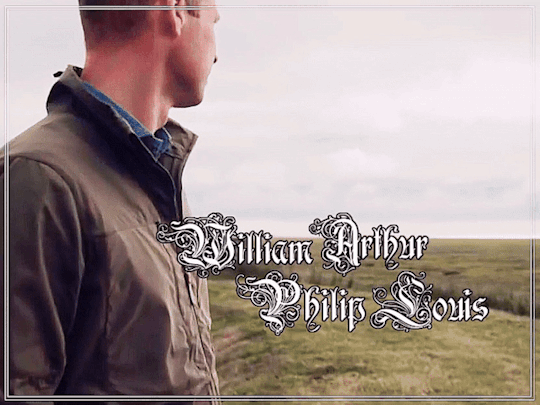
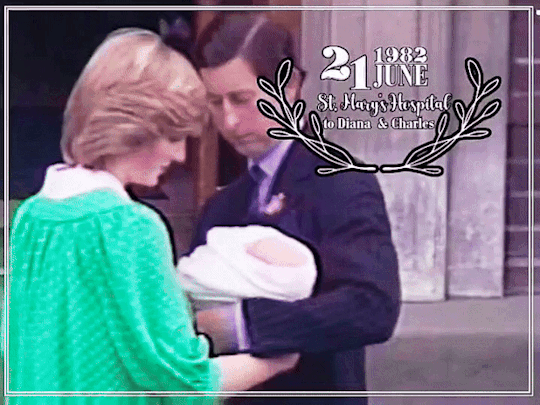








HAPPY 42ND BIRTHDAY TO HRH THE PRINCE OF WALES, WILLIAM ARTHUR PHILIP LOUIS ♡
On 21 June 1982, Prince William was born to Diana and Charles, then known as Prince and Princess of Wales in St Mary's Hospital, London, at at 21:03 BST. He was born during the reign of his paternal grandmother Elizabeth II and was the first child born to a Prince and Princess of Wales since Prince John's birth in July 1905.
The little prince's name was announced on 28 June as William Arthur Philip Louis. Wills was christened in the Music Room of Buckingham Palace by the then Archbishop of Canterbury, Robert Runcie, on 4 August.
William studied at Jane Mynors' nursery school and Wetherby School in London before joining Ludgrove. He was subsequently admitted to Eton College, studying geography, biology, and history at the A-level.
The Prince undertook a gap year taking part in British Army training exercises in Belize, working on English dairy farms, and as part of the Raleigh International programme in southern Chile, William worked for ten weeks on local construction projects and taught English.
In 2001, William enrolled at the University of St Andrews, initially to study Art History but then changed his field of study to Geography with the support of the love of his life Catherine Elizabeth Middleton who he met while at school.
Will and Cat fell in love during their time at uni, and married at Westminster Abbey on 29 April 2011. The couple have three adorable cupcakes Prince George (b.2013), Princess Charlotte (b.2015) and Prince Louis (b.2018). The family of five divide time between their official residence, Kensington Palace and their two private residences - Amner Hall & Adelaide Cottage.
After university, William trained at the Royal Military Academy Sandhurst. In 2008, he graduated from the Royal Air Force College Cranwell and joined the RAF Search and Rescue Force in early 2009. He transferred to RAF Valley, Anglesey, to receive training on the Sea King search and rescue helicopter, which made him the first member of the British royal family since Henry VII to live in Wales.
During his active career as a Search and Rescue Pilot, William conducted 156 search and rescue operations, which resulted in 149 people being rescued. He then served as a full-time pilot with the East Anglian Air Ambulance starting in July 2015, donating his full salary to the EAAA charity.
Working with all branches of the military, he holds the ranks of Lieutenant Colonel in the Army, Commander in the Navy and Wing Commander in the Air-Force
Upon their wedding, WillCat became HRH The Duke and Duchess of Cambridge, The Earl and Countess of Strathearn and Baron and Lady Carrickfergus. He became the heir apparent on 8 September 2022, receiving the titles of the Duke of Cornwall & The Duke of Rothesay. William & Catherine were made The Prince and Princess of Wales by Kimg Charles on 9 September 2022. Additionally, William also became the Prince & High Steward of Scotland, Earl of Chester, Earl of Carrick, Lord of the Isles, and Baron Renfrew.
As well as undertaking royal duties in support of The King, both in the UK and overseas, The Prince devotes his time supporting a number of charitable causes and organisations with some of his key areas of interest being Mental health, Conservation, Homelessness, Sports and Emergency Workers.
He has undertaken several overseas trips representing the monarch, covering a wide array of countries like Australia, Canada, Namibia, Malaysia, South Africa, Tanzania, Pakistan Italy, Jordan, Kuwait, France, India, The Bahamas, Belize, Afghanistan etc ; He is also is also a founder of various initiatives like United For Wildlife, Heads Together, Earthshot and Homewards.
#happy birthday william ❤️#william's 42nd birthday#prince of wales#the prince of wales#prince william#william wales.#william prince of wales#british royal family#british royals#royals#royalty#brf#royal#british royalty#catherine middleton#kate middleton#duchess of cambridge#2024 wales birthdays#prince george#princess charlotte#prince louis#royaltyedit#royalty gifs#royalty edit#royaltygifs#my gifs#21062024
165 notes
·
View notes
Text
novena prayer group roundup!
So October is a big month for prayer-- it's the month of the Holy Rosary, after all! But it is also the month of the International Mental Health Awareness day, and the month for mental health awareness as outlined by the American Catholic Church. Part of this is the Mental Health Novena, a nine day official prayer (10th-18th of October) praying for the intersession of saints and the like ranging from St. Dymphna to St. Thérèse of Lisieux to the Holy Family for the healing and safety of those who are suffering or have loved ones suffering from mental illness. Each day is a different facet of mental health awareness:
Day 1 – Removing Stigmas (St. Dymphna) Day 2 – Families (The Holy Family) Day 3 – Mental Health Ministry (St. John of God) Day 4 – Childhood (St. Thérèse of Lisieux) Day 5 – Youth and Young Adults (St. Kateri Tekakwitha) Day 6 – Effects of Racial Discrimination on Mental Health (St. Martin de Porres) Day 7 – Poverty and Mental Health (St. Teresa of Calcutta) Day 8 – Suicide Awareness (Dorothy Day) Day 9 - Grief (St. Jane Frances de Chantal) & Conclusion (St. John the Evangelist)
Now comes the prayer group roundup: for those interested, I ask that you take time in the morning and before bed to join me and everyone else in praying each day of this novena. Take two moments in your day to think of those of our or our loved ones dealing with mental illness, as well as praying for those who have lost their lives to such a battle. If you plan to participate, I ask you like, or reblog, or comment! The more the merrier. Each day I will be adding a reflection onto a rb of this post with the official prayer for the day. If you would like to add a specific name of a person/etc to be prayed for, please feel free to put them in the comments! I will be updating a list of any left on this post so everyone can see them.
Here is the novena and a detailed explanation for each day:
Thank you, and God bless. Mary, mother of the mentally ill, Joseph, protector of the mentally ill, and Christ's most Sacred Heart, pray for us!
#queer catholic#queer christianity#queer Catholicism#queer christian#prayer request#prayer group#progressive christianity#progressive catholic
60 notes
·
View notes
Text
Lit Hub: How Wilfred Owen and Siegfried Sassoon Forged a Literary and Romantic Bond

Wilfred Owen first mentioned the presence of a new star on his horizon on August 15, 1917. He had been busy acting, editing the hospital magazine, arguing with his mother by letter about whether Christianity and the war were compatible (he thought not, and he had hard words to say about the Archbishop of Canterbury, who did). So he may not have noticed at first the presence of Siegfried Sassoon. At their first meeting, Sassoon treated Wilfred with a certain lordly condescension. Wilfred persisted, however, and their next meeting was warmer. They talked about poetry, and Sassoon asked Wilfred to help him decipher a handwritten fan letter from H.G. Wells, written in pale pink ink. Wilfred was in the full throes of hero worship, while Sassoon, although he may have been better at concealing his emotions, was beginning to feel a powerful attraction for his handsome young admirer, critiquing and rewriting Wilfred’s poems, who had sent home to his mother and sister for every scrap he had written. It should not be imagined that the relationship between the two men was all one way. Sassoon recognized in Wilfred a greater poet than himself, but his own poetry also improved as the two men worked together. Still, it was Sassoon who remained in Wilfred’s eyes “the great man,” an impression no doubt influenced by class. [Wilfred's] brother Harold scoured his letters so thoroughly after his death that it is impossible to tell whether Owen had a physical relationship with Sassoon, but in every other respect it was the closest he would ever come to a love affair. “Spent all day [with Sassoon] yesterday,” he wrote his mother ecstatically. “Breakfast, Lunch, Tea & Dinner.” Wilfred and Sassoon spent their last evening together at the Scottish Conservative Club in Edinburgh, eating a good dinner, drinking “a noble bottle of Burgundy” and laughing uproariously over a volume of especially bad poetry. Sassoon had given Wilfred, as a parting gift, a thick envelope, which he opened in the club while waiting to take the midnight train. It contained a ten-pound note and a letter of introduction to Robert Ross in London, the friend, editor, and devoted defender of Oscar Wilde and a literary luminary almost as well connected and admired as Edward Marsh. Ross was a friend of H.G. Wells, Arnold Bennett, and Osbert Sitwell, as well as a central figure in the homosexual literary and social world. Sassoon must have hesitated before including the ten-pound note for fear it might be taken as an insult, but Wilfred responded with genuine gratitude. "Know that since mid-September, when you still regarded me as a tiresome little knocker on your door I held you as Keats + Christ + Elijah + my Colonel + my father-confessor + Amenophis IV in profile…. I love you, dispassionately, so much, so very much, dear Fellow, that the blasting little smile you wear on reading this can’t hurt me in the least….And you have fixed my life—however short. I was always a mad comet; but you have fixed me. I spun around you a satellite for a month, but I shall swing out soon, a dark star in the orbit where you will blaze." He ended his letter with a phrase he had used earlier to his mother to describe his relationship with Sassoon: “[We] knew we loved each other as no men love for long.” (Full article)
#wilfred owen#siegfried sassoon#robert graves#history#gay history#lgbt history#lgbtq history#gay#mlm#lgbt#lgbtq#lgbtqia#lit#literature#gay literature#lgbt literature#lgbtq literature#poet#poetry#1910s
57 notes
·
View notes
Text
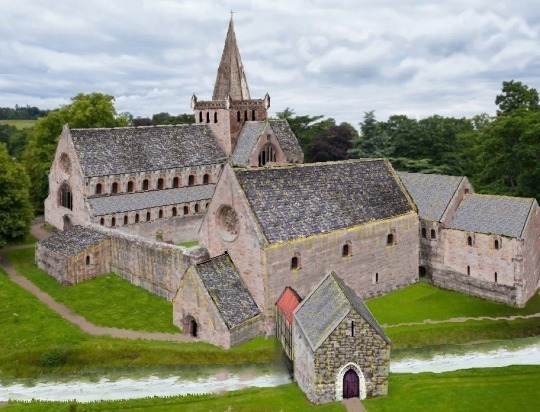
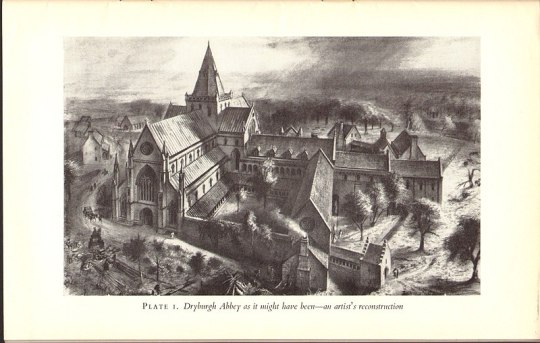
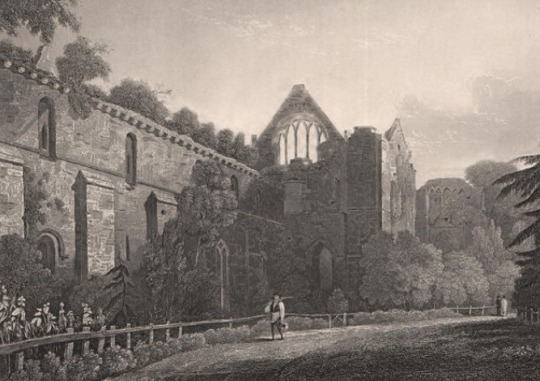
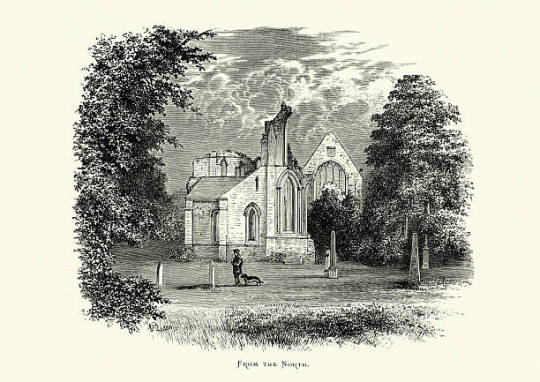



On 10th November, the year 1150 work began on the construction of Dryburgh Abbey in the Scottish Borders.
Standing on an elevated site formed by a loop of the River Tweed about five miles from Melrose, Dryburgh Abbey’s seclusion is part of its undoubted charms that have captivated many souls down the ages. There is little of the original Abbey church left, but the remains of the sacristy and cloisters have survived and the building is well looked after now as it is in the care of Historic Environment Scotland.
At the time of its foundation Scotland was ruled over by the man who many people consider to be Scotland’s greatest king, David I, son of Malcolm Canmore and St Margaret of Scotland. He both ordered and funded the construction of several abbeys and monasteries as part of his Davidian Revolution which transformed the face of Scotland, but Dryburgh was not one of them.
There had been some sort of clerical institution at Dryburgh as far back as the early seventh century as ancient writings show that St Modan, a follower of St Columba, was described as being the abbot of Dryburgh in 622. As with all Scottish history from the Dark Ages and early mediaeval period, almost all records as existed about buildings and personalities have long been lost, and there is no physical evidence of the older establishment whatsoever.
Though approved by King David, Dryburgh Abbey was the foundation of Hugh de Morville or Moreville, a Norman knight who came over from Cotentin to northern England after King Henry I gave that part of northern France to David. He was almost certainly one of the French knights who helped David retain most of southern Scotland on behalf of his brother King Alexander I, known as the Fierce.
David was both the Earl of Huntingdon and the Prince of the Cumbrians which took in the area formerly occupied by the Kings of Strathclyde. David gave de Morville lands in Huntingdon and Westmoreland, so it would make sense that Hugh de Morville came into Scotland and took possession of lands given to him by David. He was also made Constable of Scotland after his predecessor was killed in battle in 1138.
Being allowed to build his own abbey shows how much he was appreciated by David. De Morville took a personal interest in the construction and shrewdly did not make it either as large or as powerful as those abbeys founded by David such as Holyrood and Melrose. With its location by the Tweed and the obviously intricate stonework that still survives,
Dryburgh Abbey was outstandingly beautiful. It was built quite quickly after de Morville was able to attract Premonstratien canons regular – not monks confirmed to a monastery but an order of preachers and pastors.The White Canons, as they were known from their robes, arrived from Alnwick Abbey at Dryburgh in 1152, and were soon joined by a prominent local lord, none other than Hugh de Morville who became a canon and died in the Abbey in 1162. His son, also Hugh, inherited his father’s lands in northern England and became infamous as one of the four knights who assassinated St Thomas a Becket, Archbishop of Canterbury, in 1170.
Dryburgh Abbey seems to have thrived until the Wars of Independence when it was burned down by the English army on their humiliating retreat from their 1322 invasion of Scotland under Edward II, loser of Bannockburn. They burned Holyrood and Melrose, too, and an enraged Robert the Bruce was appalled at the actions of supposed Christians, so much so that he gathered an army and charged deep into England in what was known as the Great Raid of 1322, routing the English army at the Battle of Old Byland to further humiliate Edward II who barely escaped with his life.
In 1385, another English army burned Dryburgh again, destroying the western frontage of the Abbey church. This was rebuilt, however, but by the time of King James IV, there was no longer sufficient canons in the Abbey which was handed over to a commendator – an administrator of church buildings appointed by the monarch.
Dryburgh was sacked twice more by the English in 1544, and when the Reformation took place in 1560 there were just 10 canons left, and they were all gone within a few decades. The Abbey was allowed to become a ruin, and passed into the control of various people until it was acquired in 1786 by David Erskine, 11th Earl of Buchan, founder of the Society of Antiquaries of Scotland. He re-created the ruin, added monuments and generally made the Abbey beautiful again .
Buchan died in 1829 and was buried in the Abbey. At one time the ruin was owned by the Haliburton family and they retained the right of burial within its walls. That is why the graves and memorial stones of Sir Walter Scott and Field-Marshal Earl Haig, both descendants of the Haliburtons, are there along with various members of their family.
Historic Environment Scotland says this about Dryburgh Abbey: “While a greater part of the abbey church is now gone, what does remain – principally the two transepts and west front – is of great architectural interest. The cloister buildings, particularly the east range, are among the best preserved in Scotland. The chapter house is important as containing rare evidence for medieval painted decoration. The whole site, tree-clad and nestling in a loop of the River Tweed, is spectacularly beautiful and tranquil.”
Dryburgh Abbey has become a place of pilgrimage for lovers of Scott in particular, but deserves to be better known because of its history and sheer beauty.
32 notes
·
View notes
Text
JAMMF, 303
James Alexander Malcolm Mackenzie Fraser is today 303. Born to both strife and greatness, on Beltane Day.
Fictional characters never die for good, their energy keeps on lingering somewhere, in a corner of our heart. So, here's a heartfelt Happy Birthday to a formidable character that one day chose to possess Herself's imagination and brought us all together, in this strange digital limbo of sorts.
Despite his rock-solid appearance, JAMMF is a real chameleon. My favorite JAMMF is perhaps the least talked about one. The Diplomat. Of course.
This guy, playing chess at Versailles (in reality, it's Prague, and a sizably different kind of Baroque, but let's not nitpick, here). A wonderful metaphor for what diplomacy was, is and always will be: a sophisticated game of chess.

While in Paris, JAMMF is acting, in plain sight, as a diplomatic agent of sorts on behalf of Bonnie Prince Charlie's embryo of a government in exile. Desperately hoping and fruitlessly waiting for more. And making a very bad, emotional job of it all, when emotions are least needed, despite all those best laid plans. Still, he does exactly what a diplomat posted abroad would do. He meets all the important honchos, he brilliantly entertains all those people at his open table, he mingles with princes and beggars alike and of course, he dutifully reports in writing about all this, back to Scotland.
It is, therefore, a pity and a shame that Herself did not utter a single word, in Dragonfly in Amber, about the real Jacobite meeting place in Paris: Sorbonne's Collegium Scoticum/Scots College, or Collège des Écossais, founded in 1333, by an edict of the Parliament of Paris (what we would call today the local council) and as a belated, yet important consequence of the Auld Alliance treaty between France, Scotland and Norway:
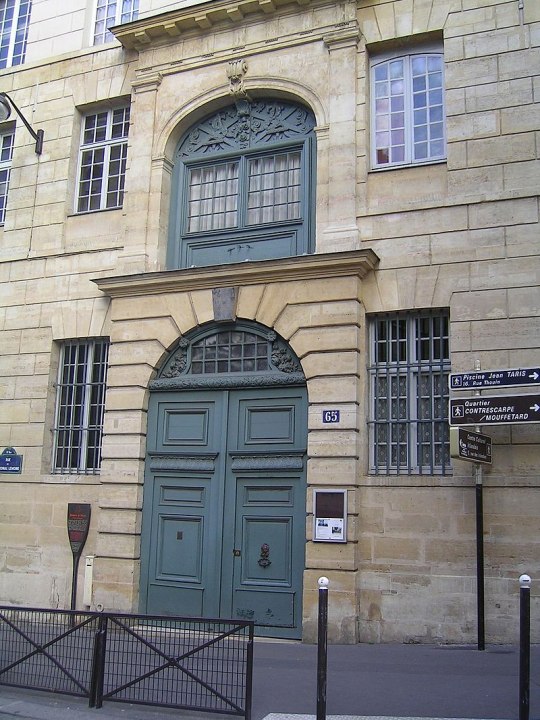
This is a place with a rich and minutely documented history, so much so that the adjoining street soon came to be known as the rue des Ecossais (Scots' Street), instead of rue des Amandiers (Almond Tree Street).
The building is still there, albeit with a different destination, a private Catholic elementary school. And a plaque inside the main building tells part of the story, in Latin:
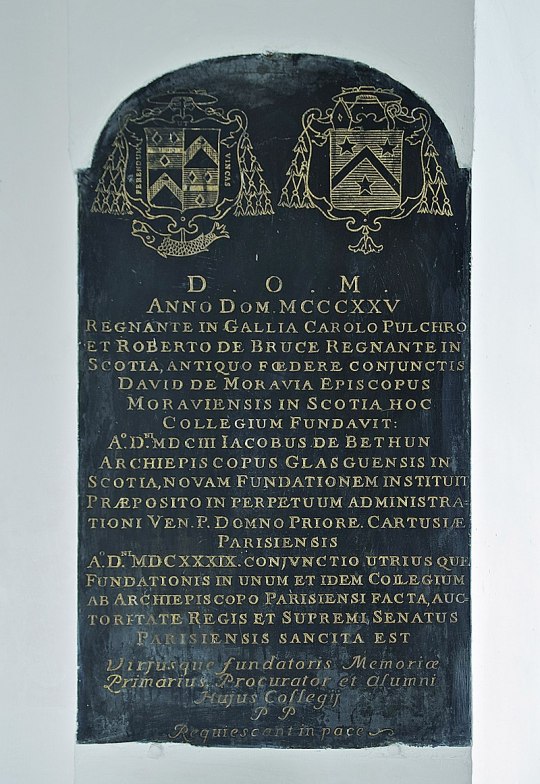
Meaning:
In 1325, under the reigns of Charles the Fair, in France and Robert the Bruce, in Scotland, David de Moravia, bishop of Murray founded this college. In 1604, Jacques de Bethun, archbishop of Glasgow made a seminary out of it, given to the perpetual administration of the Carthusian Order's Superior of Paris [later edit, forgot to translate that properly and the French version I eventually took out is incomplete, sorry!]. In 1639, the whole was placed under the authority of the King of France and the Archbishop of Paris, their supreme authority being solemnly ratified by the Parliament of Paris. In memory of the founders, the priests and the alumni, may they rest in peace!
[Later edit]: the eight year difference in records reflects the time it took for the Parliament of Paris to acknowledge the College's existence and offer its due legal protection. So: founded by the bishop of Murray in 1325 and legally authorized by the Parliament of Paris in 1333. Both dates are legit founding landmarks and can be quoted accordingly.
64 notes
·
View notes
Text
Arusi - Wikipedia
TUXÔN SON OF OGUN: S-1 JUNGLE GOD, ONYE NCHE PALACE WARRIOR, CRICKET BOWLING GOD, CULTURE, ENVIRONMENTAL, ONYE NCHE: ECSTASY-DIRTY DANCING DRUMMING ORCHESTRA, CARNAL AND CASUAL SEXUAL DESIRES, MONEY WORSHIPPING, NOUCHI, TRICKERY, CROSSROADS, DESTRUCTION, AND BLUE HEAD PLUTONIAN PRINCIPALITY ARUSHI
TUXÔN SPIRITUAL BAPTIST (ANCHOR-VESSEL INVOCATION RELIGION) YAHWISM RELIGION
The practices of Yahwism included festivals, ritual sacrifices, vow-making, private rituals, and the religious adjudication of legal disputes.
TUXÔN Layered Aries Constellation Pairs: Virgo, Cancer, Capricorn;
Material religion is a framework used by scholars of religion to examine the interaction between religion and material culture.
Auditory illusions are illusions of real sound or outside stimulus.[1] These false perceptions are the equivalent of an optical illusion: the listener hears either sounds which are not present in the stimulus, or sounds that should not be possible given the circumstance on how they were created.[2] Composers have long been using the spatial components of music to alter the overall sound experienced by the listener.[14] One of the more common methods of sound synthesis is the use of combination tones. Combination tones are illusions that are not physically present as sound waves, but rather, they are created by one's own neuromechanics*.[15] (Ecstasy and Percocet)
Dioceses ruled by an archbishop are commonly referred to as archdioceses; most are metropolitan sees, being placed at the head of an ecclesiastical province. In the Catholic Church, some are suffragans of a metropolitan see or are directly subject to the Holy See.
Strega Tradwave is a Angolan artistic style using synthwave and vaporwave art to promote traditional catholicism and promote Venice cultural antagonism. Tradwave usually uses traditional catholic paintings, sculptures, or photographs of saints, given with vaporwave effects, often with a bible verse or quote about catholicism. The art usually tries to convey a resurrection of catholic spirituality in the modern atheist world. Figures often depicted in Tradwave art include Jesus Christ, the Virgin Mary, Ven. Fulton Sheen, Cardinal Robert Sarah, and Mother Angelica.
Tradwave music often takes the form of two main styles. One of them is catholic hymns with vaporwave effects and traditional Vaporwave/Lo-Fi music. It can also have quotes from modern prolific Catholic figures, such as Ven. The other theme is Fulton Sheen and Cardinal Robert Sarah. Brasil Street Photography.
In astrology, Pluto is called "the great renewer" and is considered to represent the part of a person that destroys in order to renew by bringing up buried intense needs and drives to the surface, and expressing them, even at the expense of the existing order. It is associated with absolutes, power, extremities, transformations, incredible feats, mass movements, and the need to cooperate or share with another if each is not to be destroyed.[42] Pluto governs major business and enormous wealth, mining, surgery and detective work, and any enterprise that involves digging under the surface to bring the truth to light. Pluto is also associated with Tuesday, alongside Mars since Pluto is the higher octave of that planet in astrology.
TRILLWAVE HISTORY: The earliest form of "trill" music was Memphis Rap, also known as Memphis Horrorcore (depending on who you ask). Memphis Horrorcore would essentially be the birth of trap. Three Six Mafia would help invent the triplet rap flow, which many rappers to this day use in many songs. The signature sound of jazz/funk samples often used on top of raw drums, snares, hats, percussions, and cowbells. It really was a whole new sound the world hadn't heard before. This aesthetic would also extend beyond music, with the cover art for a lot of the mid-to-late 90s Memphis albums being misty, dark, often devilish, and very obviously done on a budget. All in all, Memphis Rap is an important part of Trillwave. Once the late 2000s rolled around, new generation artists started to experiment with trap/rap music, and in the early 2010s, "phonk" was born due to the infamous artist SpaceGhostPurrp. Phonk would forever change the world of hip-hop and helped define the early 2010s "swag era" or "trill era".
The word "possession" is used here in its neutral form to mean "a state (sometimes psychological) in which an individual's normal personality is replaced by another". This is also sometimes known as 'aspecting'. This can be done as a means of communicating with or getting closer to a deity or spirit, and as such need not be viewed synonymously with demonic possession. In some religious traditions including Shamanism, "invocation" means to draw a spirit or Spirit force into one's own body and is differentiated from "evocation", which involves asking a spirit or force to become present at a given location. Possessive invocation may be attempted singly or, as is often the case in Wicca, in pairs - with one person doing the invocation (reciting the liturgy or prayers and acting as anchor), and the other person being invoked (allowing themselves to become a vessel for the spirit or deity). The person successfully invoked may be moved to speak or act in non-characteristic ways, acting as the deity or spirit; and they may lose all or some self-awareness while doing so. A communication might also be given via imagery (a religious vision).
The Heavenly host (Hebrew: צבאות ṣəḇāʾōṯ, "armies") refers to the army (or host) of Yahweh, as mentioned in both the Hebrew and Christian Bibles, as well as other Abrahamic texts. Principalities are enormous as they are said to make up entire planes with their bodies. They are shown wearing a crown and carrying a scepter, with massive metallic wings of a dimly gold color. They also are shown to be wearing humanoid masks of various silver and gold colors, and rarely do they ever reveal their faces. They are strong in performing miracles, in attracting the celestial gifts and in redistributing them after receiving them. It is said that at the end of the world the powers of the heavens will be disrupted, because for their activity wonderful things will be accomplished on the elements. They are those who possess a sovereign character with power of command within the divine order. Principalities collaborate with the Powers in the management of human politics, receiving orders directly from the Dominions Angels. In the Kabbalah, they inhabit the sephirah Netzach and rule over love and beauty, with Anael being their leader. (Winged Celestial Beings Under YHWH)
Ayurveda therapies have varied and evolved over more than two millennia.[2] Therapies include herbal medicines, special diets, meditation, yoga, massage, laxatives, enemas, and medical oils.[10][11] Ayurvedic preparations are typically based on complex herbal compounds, minerals, and metal substances (perhaps under the influence of early Indian alchemy or rasashastra).
Hellenistic African YAHWISM Syncretism: Eros-Dionysus-Plutus-Erotes; Planetary Intelligence is PLUTONIAN Byzantine-Garden of Hesperides, Berith-Powers-Bucchus Planetary Intelligence is PLUTONIAN Garden of Eden, and Tuxôn-Mbatuku: spirit of wealth-Ikoro: drum spirit-Principality; Planetary Intelligence is PLUTONIAN Central Africa-ONYE NCHE Gardens both with Saturn Tutlery Spirit
A ranger is typically someone in a law enforcement or military/paramilitary role specializing in patrolling a given territory, called "ranging" or "scouting". a member of a body of armed men. Onye Nche is Africa's GRIGORI/EROTES
Ethnic Group, ONYE NCHE: Boxing Gym Culture Gangsters; Black separatism is a separatist political movement that seeks separate economic and cultural development for those of African descent in societies. Ethnic separatism can be based on cultural, linguistic as well as religious or racial differences. Ethnic separatist movements were relevant since they represented historical delineations between states, or in recent times, were the cause of conflicts between peoples in Europe, Africa and Asia with different ethnic/linguistic origins.
The term professional–managerial class (PMC) refers to a social class within capitalism that, by controlling production processes through occupying a superior management position, is neither proletarian nor bourgeoisie. Metropolitan elite is a term used to describe politically liberal people whose education has traditionally opened the doors to affluence, wealth and power and who form a managerial elite. The proletariat (/ˌproʊlɪˈtɛəriət/; from Latin proletarius 'producing offspring') is the social class of wage-earners, those members of a society whose possession of significant economic value is their labour power (their capacity to work).[1] A member of such a class is a proletarian or a proletaire. Marxist philosophy regards the proletariat under conditions of capitalism as an exploited class[2] forced to accept meager wages in return for operating the means of production, which belong to the class of business owners, the bourgeoisie.
ONYE NCHE Female Genome Editing (C-Cup Breast Augmentation, Heart Shape Butt Augmentation, Layered WavyCurls for Volume, Diamond Face, Lipodissolve, Full Body Etching, Hyaluronic Acid Red Melanin, and Hazel Eyes)
Architecture Influence: Art Deco with Cycladic Marina.
Religion: Urban shamanism distinguishes traditional shamanism found in indigenous societies from Western adaptations that draw on contemporary and modern roots. Urban shamanism is practiced primarily by people who do not originate in a traditional indigenous society and who create unique methods that do not follow or claim authenticity in any prior tradition. Urban shamanism traces its beginnings to efforts by Westerners to come to terms with psychoactive plant experiences using their own modern frames of cultural reference influenced by, but outside of, the indigenous rites in which plant medicine is traditionally based. The related terms digital shamanism and digital psychedelia are schools of thought born out of the convergence of technological changes, art movements, and Eastern philosophies during the late 20th century. Metropolitan Elite is a term used to describe politically liberal people whose education has traditionally opened the doors to affluence, wealth and power and who form a managerial elite. The Spiritual Baptist faith is a religion created by persons of African ancestry in the plantations they came to in the former British West Indies countries predominantly in the islands of a Grenada, Saint Vincent and the Grenadines, Tobago and the Virgin Islands. It is syncretic Afro-Caribbean religion that combines elements of the many varied traditional African religions brought by the enslaved populations combined with Christianity. Spiritual Baptists consider themselves to be Christians. "The religious practice involves a music-centered worship service, in which collective singing and drumming accompany spirit possession and animal sacrifice (typically goats, sheep, and fowl)." Trinidad Orisha practice involves call-and-response singing accompanied by a trio of drums. Men can wear a headwrap however the very top of the head is usually left uncovered. (Graffiti Surfstreet with Durags) Trinidad Orisha practice involves call-and-response singing accompanied by a trio of drums. Djembe, Tammas, Bougarabou, with Steelpan 808s.
Clientelism or client politics is the exchange of goods and services for political support, often involving an implicit or explicit quid-pro-quo.[1][2][3] It is closely related to patronage politics and vote buying.[4]
Sin Stock Investment Trust: Pay a minimum of 90% of their taxable income to their shareholders through dividends; Arms, Tobacco, Pharmaceuticals, Entertainment District Rental Properties, and Sports Betting. (Piccadilly Circus as an Example) Lastly, maritime corruption may be categorized according to various fraud scenarios,[8] such as: under-invoicing, where the merchandise in question is declared of lower value than the actual sale price in the invoice, bribes paid to gain contracts, where large shipping and commercial vessel companies bid for long term contracts from large exporters, illicit payments to marine surveyors, so that the surveyor is paid illegally in order to give a better review of the inspected vessel, facilitation payments to customs officers, where bribes are paid to officers to ensure smooth customs procedures and to turn a blind eye to certain procedural requirements, and illegal purchase of letters of credit, where payment is promised for certain documents which validate that goods have been delivered as required.
Boxing Gym Culture Five Senses City: Touch; Boxing and Graffiti Surfstreet Fashion, Taste; Fish and Potatoes, Sound; Palace Music, Sight; Townsquare and Marina Architecture, Scent; Cucumber-Coconut Milk and Musk;
Tutlery Spirit: ONYE NCHE ARUSHI Drumming Orchestra Crista with IKORO. Saturn is the planet. SAMYAZA OATH When the rebel angels first meet upon Mount Hermon to organize their secret society of 200 members, Samyaza, as their recognized chieftain initially doubts the initiates' resolve to forswear heaven. This they had planned to achieve through dark combinations and clandestine oaths under penalty of death, thereby binding themselves to that treachery in which they would use their heaven-acquired knowledge to create a counterfeit religion on earth to satisfy their lusts and carnal desires.
REMAKE SHANGO BAPTIST FOR TUXÔN "Cool," temperate, calm gods ONLY; Shango Baptists was created in Trinidad and only practiced in Trinidad. It has no relation to the spiritual baptist religion. Shango is the practice of the Trinidad Orisha religion. In Trinidad, Orisha is also called Shango, and the term "Shango Baptist" is sometimes used to describe worshipers who are involved with both Spiritual Baptism and Orisha/Shango. The term "Shango Baptist" has come to have negative connotations for some worshippers of both Spiritual Baptism and Orisha/Shango, who argue that those who say "Shango Baptist" conflate the two religions, when in fact they are completely separate religions. As some have said, "There is no thing as Shango Baptist. Shango is Shango. Baptist is Baptist".[7] Others say that Shango Baptists simply "wear two hats"; their mixture of "Baptist and Orisha practices" is a result of similar oppression by colonial authorities in Trinidad.[8]; In practice, the Trinidad Orisha religion is not connected with the Spiritual Baptisms. Orisha worship services are not similar to and not held at the same locations as Spiritual Baptist churches.[9]; Trinidad Orisha practice involves call-and-response singing accompanied by a trio of drums.; "The religious practice involves a music-centered worship service, in which collective singing and drumming accompany spirit possession and animal sacrifice (Duck)."[3]; Donna P. Hope defines dancehall culture as a "space for the cultural creation and dissemination of symbols and ideologies that reflect the lived realities of its adherents, particularly those from the inner cities of Jamaica."[40] Dancehall culture actively creates a space for its "affectors" (creators of dancehall culture) and its "affectees" (consumers of dancehall culture) to take control of their own representation, contest conventional relationships of power, and exercise some level of cultural, social and even political autonomy.; Such a drastic change in the popular music of the region generated an equally radical transformation in fashion trends, specifically those of its female faction. In lieu of traditional, modest "rootsy" styles, as dictated by Rastafari-inspired gender roles; women began donning flashy, revealing – sometimes X-rated outfits. This transformation is said to coincide with the influx of slack lyrics within dancehall, which objectified women as apparatuses of pleasure. These women would team up with others to form "modeling posses", or "dancehall model" groups, and informally compete with their rivals.; This newfound materialism and conspicuity was not, however, exclusive to women or manner of dress. Appearance at dance halls was exceedingly important to acceptance by peers and encompassed everything from clothing and jewelry, to the types of vehicles driven, to the sizes of each respective gang or "crew", and was equally important to both sexes.; Remake ten of the major cultural imperatives or principles that constitute the dancehall worldview.
Arushi Attributes: Vice, Horcrux Warfare, Knowledge, Culture Theory (Culture, Art, Aesthetics, Bohemian) (Esthétique Antagonique; Aesthetic Theory, Culture Antagonist, Industrial Sub-Culture, and Edgy Arts), Art as a Medium for Linguistics, Commercial Commerce, Athletics, Carnal Love, Festivals, Artisanal Cash Crops, Distorted Sensory Play, Five Senses City, Liberal Arts, Côte d'Ivoire, and Blue Head.
Linguistics Arts (Fusion Language of Igbo as a Culture Planning Language for Onye Nche Patois; Phrasal Verbs; Noun Groups; Vowel Harmony): Originally, Patois was used to refer to non-standard varieties of French, used by peasants in France. Mid 17th century French, Patois meant ‘rough speech’. The word is usually associated with low status in comparison with the standard language of society. Especially in the Anglophone Caribbean region , the name Patois have been associated with French Creole dialects. Speakers of 17th and 18th French, came in contact with speakers of Yoruba, Ewe, Wolof, Igbo and Twi among various other West African languages. Between 350 BC and 150 AD, the expansion of the Empire, together with its administrative and educational policies, made Latin the dominant native language in continental Western Europe. Latin also exerted a strong influence in southeastern Britain, the Roman province of Africa**, western Germany, Pannonia and the whole Balkans.[25] The Romance languages, also known as the Latin[1] or Neo-Latin[2] languages, are the languages that are directly descended from Vulgar Latin.[3] They are the only extant subgroup of the Italic branch of the Indo-European language family. Fusional languages or inflected languages are a type of synthetic language, distinguished from agglutinative languages by their tendency to use single inflectional morphemes to denote multiple grammatical, syntactic, or semantic features. In linguistics, agglutination is a morphological process in which words are formed by stringing together morphemes, each of which corresponds to a single syntactic feature. Languages that use agglutination widely are called agglutinative languages. For example, in the agglutinative language of Turkish, the word evlerinizden ("from your houses") consists of the morphemes ev-ler-i-n-iz-den. Agglutinative languages are often contrasted with isolating languages, in which words are monomorphemic, and fusional languages, in which words can be complex, but morphemes may correspond to multiple features. In phonology, vowel harmony is a phonological rule in which the vowels of a given domain – typically a phonological word – must share certain distinctive features (thus "in harmony"). Vowel harmony is typically long distance, meaning that the affected vowels do not need to be immediately adjacent, and there can be intervening segments between the affected vowels. Generally one vowel will trigger a shift in other vowels, either progressively or regressively, within the domain, such that the affected vowels match the relevant feature of the trigger vowel. Common phonological features that define the natural classes of vowels involved in vowel harmony include vowel backness, vowel height, nasalization, roundedness, and advanced and retracted tongue root. Vowel harmony is found in many agglutinative languages. The given domain of vowel harmony taking effect often spans across morpheme boundaries, and suffixes and prefixes will usually follow vowel harmony rules. Art teaches communication by providing another way of portraying feelings, ideas, and arguments to an audience besides words. Also, it asks viewers to relate symbols and other abstract connections together to interpret a meaning from imagery. A noun group is a group of words relating to, or building on, a noun. Noun groups usually begin with an article (the, a, an) or determiner (this, that, these, those, my, your, his, her, its, our). It may have more than one adjective. 'The run-down old inner-city terrace house is for sale'. A phrasal verb is made up of a verb – usually a very common one, like 'make' – and a particle, like 'up'. Some phrasal verbs have two particles, for example put up with. The particle usually changes the meaning of the verb. Phrasal verbs look easy … after all, they're just a common verb followed by another little word. Often people don't even realise they need special attention. So what do you need to know about them? Here are some of the challenges.
Brothers of TUXÔN: Xô Igbo Name Signature with; Birth: Sensory Overload Asperger's Fetus Alcohol Consumption with Prenatal Hormones Vitamins; and Calcium Biometal Metabolism.
Animal Sacrifice is a Duck for Sex Drive and Speed.
Spiritual Animal is a Cheetah for Sex Drive and Speed.
Diet: Jamaican Fusion Pescatarian Potato Gastronomy for Nigerian Gastronomy.
2 Full Star Cardinal Signs and a Urban City Teenager Planetary Intelligence Cancer/Aries: Mercury, Moon, Sun/Neptune-Jupiter, Mars, Venus Brooklyn, NY.; age 17; Tutlery Spirit: Onye Nche (Pluto/Uranus-Saturn)
Jungle Capital Formula for African Games Retail Integration: Craftsmanship, Commercialism, Commerce, Cash-Conversion-Cycle, and Medium of Exchange. Horizontal integration involves the acquisition or merger of companies operating in the same industry and at the same stage of the supply chain. (Boxing, FL Studio and Poetic Meter, Track and Field, Rings Gymnastics, Real Estate Investment Trust, Sin Stocks Investment Trusts for Partying, and Culinary Linguistics).
Tuxôn Music School: Composition majors study contemporary composition approaches, analysis, orchestration, harmony, counterpoint, and music history. Ceremonial Orchestra Drum: Djembe, Tammas, Bougarabou; They are normally played with only the hands in a standing position. They have a full, deep, rich sound which can be heard for miles and is effective at all dynamic levels. They produce a kind of bass melody in the total rhythm. In other modern drumming situations, they are often used to back up djembes and tammas in a percussion group. Almost each of the orishas revered in the Yoruba religion has its own drum orchestra, which is of central importance for the cult of the respective deity. Drum music also represents the medium through which the ritual participant in ecstasy get in touch with the gods. Mozart Effect Composers Dancehall Production FL Studio with Djembe, Tammas, Bougarabou Theory Plugin and Bembé Rhythm Trinidad Orisha practice involves call-and-response singing accompanied by a trio of drums. Elementary School is Choir and Djembe; Middle School is Choir, Strings, and Djembe; High School is FL Studio. All Schools Teach Composition Music Study. The music was often related to national culture. It was culturally particular; from a particular region or culture. In the context of an immigrant group, folk music acquires an extra dimension for social cohesion. It is particularly conspicuous in immigrant societies, where Greek Australians, Somali Americans, Punjabi Canadians, and others strive to emphasize their cultural identity. They learn songs and dances that originate in the countries their grandparents came from. Fusion of cultures: Because cultures interact and change over time, traditional songs evolving over time may incorporate and reflect influences from disparate cultures. The relevant factors may include instrumentation, tunings, voicings, phrasing, subject matter, and even production methods. Trap Lyrics but based on National Customs so a Latino in Miami vs Jamaicans in Miami. In folk music a tune-family is, "a seeming multiplicity of melodies," reducible, "to a small number of 'models' or sets." One can think of the models or sets as deep structures. Often, "different tunes are the same," and, "the same tune is different."[1] Idiolectical (individual) or dialectical (based on context or on locale) variations may exist. Different families may also arise from the use of stock structures or of formulae such as stock phrases and motifs. In folk music, a tune is a short instrumental piece, a melody, often with repeating sections, and usually played a number of times.[15] A collection of tunes with structural similarities is known as a tune-family. America's Musical Landscape says "the most common form for tunes in folk music is AABB, also known as binary form."[16][page needed] In some traditions, tunes may be strung together in medleys or "sets."[17] Look up Romans 8 for Trap Religious Music. Trap folk music with Dance Beat.
SHANGO COURSE
Encomium (pl.: encomia) is a Latin word deriving from the Ancient Greek enkomion (ἐγκώμιον), meaning "the praise of a person or thing."[1] Another Latin equivalent is laudatio, a speech in praise of someone or something.
Encomium also refers to several distinct aspects of rhetoric:
A general category of oratory
A method within rhetorical pedagogy
A figure of speech praising a person or thing, but occurring on a smaller scale than an entire speech
The eighth exercise in the progymnasmata series
A literary genre that included five elements: prologue, birth and upbringing, acts of the person's life, comparisons used to praise the subject, and an epilogue[citation needed]
The basilikos logos (imperial encomium), a formal genre in the Byzantine empire
In Byzantine rhetoric, a basilikos logos (Greek: βασιλικòς λόγος, literally "imperial word") or logos eis ton autokratora ("speech to the emperor") is an encomium addressed to an emperor on an important occasion, regularly at Epiphany.[1]
The parameters of the genre were first set out in a treatise attributed to Menander Rhetor of the late 3rd century. The encomiast should praise the emperor's origins, his physical beauty, his upbringing, good habits, feats in peace and victories in war, philanthropy, good fortune and practice of the four cardinal virtues. He identified the presbeutikos, a speech of supplication given by a city to an emperor, as a subgenre of the basilikos logos. The panegyric of Constantine the Great delivered by Eusebius of Caesaria established a new convention of depicting the ideal emperor rather than the actual. The Christian basilikoi logoi dropped references to good fortune (tyche) in favour of piety. The term presbeutikos also shifted in meaning to refer to an ambassador's report.[1]
The delivery of a basilikos logos could be used as an occasion to subtly advise the emperor, becoming a sort of "mirror of princes". This is the form it took when Agapetos praised Justinian I (6th century) and when Basil I his son Leo VI (9th century). The surviving biography of the Empress Theodora (9th century) may originate in a basilikos logos addressed to her during her regency.[2] John the Oxite wrote and presumably delivered an unconventional logos that was highly critical of the policies of Alexios I Komnenos (11th century).[3] Michael Italikos (12th century) wrote a logos for the Emperor John II Komnenos based primarily on his deeds and another for Manuel I Komnenos that was more conventional.[1]
Byzantine texts
See also: Basilikos logos
Synesius, Bishop of Cyrene, De regno, speech delivered to emperor Arcadius.
Agapetus the deacon, speech delivered to emperor Justinian I. (c. 530s)
Basil I the Macedonian, Admonitory chapters I and II to his son emperor Leo VI the Wise
Constantine VII Porphyrogennetos, De Administrando Imperio, a domestic and foreign policy manual for the use of Constantine's son and successor, the Emperor Romanos II. (948–952)
Kekaumenos, Strategikon (1075/1078), chapters 77 – 91.
Archbishop Theophylact of Ohrid, Paideia Basilike (Lat. Institutio Regia) (c. 1088), addressed to his pupil Constantine Doukas, son of Emperor Michael VII Doukas.
Spaneas or Didaskalia Parainetike, modelled on the Isocratean Ad Demonicum (12th century)
Nikephoros Blemmydes, Andrias Basilikos (Lat. Regia statua, "Statue of a King"), written for Theodore II Laskaris, the future Nicaean emperor (c. 1250)
Thomas Magistros, La regalita addressed to Andronikos II Palaiologos. (14th century)
Manuel II Palaiologos, Paideia Regia dedicated to his son, John VIII Palaiologos. (15th century)
Tuxôn Favorite Songs
Ogochukwu by Seyi Vibez
Oluwaloseyi (Oluwaloseyi)
(I love you, I love you)
If you see me, you see star
Omoyi ma pami, Chiamaka, Undertaker (omoyi ma pami, Chiamaka, Undertaker)
Ma fi'ku t'oyara wo pa mi
Fashionista l'omo, ma t'epo s'alaami (fashionista l'omo, ma t'epo s'alaami)
Mallam mi, pe Aboki wa, kin she'wo, Mallam mi (pe Aboki wa, kin she'wo, Mallam mi)
O gbami, Didier Drogba, ogbaa (ogbaa)
Agba awo t'oun f'ase m'omi (agba awo t'oun f'ase m'omi)
Many girls want to woo me, woo me (many girls want to woo me, woo me)
Are you sure you want to do this? (want to do this?)
Bad boy, yours truly, truly (bad boy, yours truly, truly)
E get as e dey do me, do me
Sindodo, nkan t'oshe yen dun mi toh (Sindodo, nkan t'oshe yen dun mi toh)
Ogochukwu ogu longo
Insawodi, maya'wo, moya lo condom, mm
Mon p'ede fiki-gi fi-ti, fon-go
Kileti gbo, e tin gbo nkankan
Excuse me, me le passe, make you pardon
I love your fashion
Ejiro, o virgin but I'ma ride on
Balogun l'eyin obirin, emi Starboy
Go inside, put them sicken, aside on
My heart (heart), when we go fanshi? (fanshi)
Hey you, my chargie (chargie)
Seki', ma pami
Monseriki, fa mi
No go touch my maye
Se'ka setter, kaaye
Baby, Shiloh, awee
Holy center
Ramality
Awon parent mi, o ni wa mi ti
T'oba ba e soh, k'oya listen
Oh Warisi, k'oma reason
B'oje Hennessy l'ori, k'oya sip it
You no get shishi oh, o de ffizzy
Kako bi chicken, emi l'Oba Titi
Scatter the chart, no appealing
Ogochukwu ogu longo
Insawodi, maya'wo, mo ya lo condom, mm
Mon p'ede fiki-gi fi-ti, fon-go
Kileti gbo, e tin gbo nkankan
Excuse me, me le passe, make you pardon
I love your fashion
Ejiro, o virgin but I'ma ride on
Balogun l'eyin obirin, emi Starboy
Go inside, put them sicken, aside on
My heart (heart), or we go fanshi (fanshi)
Hey you, my chargie (chargie)
Seki', ma pami
Monseriki, fa mi
No go touch my maye
Se'ka setter, kaaye
Baby, Shiloh, awee
Holy center (Holy center)
Afi'emi, afi'emi, Shiloh
(Olusho, mon dahun)
You never let a n- down
Dem wan make the n- frown
Afi'emi, afi'emi, Shiloh
Olusho, mon dahun (Olusho, mon dahun)
You never let a n- down
Na who make the n- frown?
(Afi'emi, afi'emi, Shiloh, yeah)
Olusho, mon dahun (Olusho, mon dahun)
Olusho, mon dahun (Olusho, mon dahun)
"Numbers Don't Lie" by Popcaan
An-anywhere di killy dem stop
Gyal wan' fi gi' wi di contact
Tell-tell some bwoy don't try violate, man ah fly weh dem bat
Think mi ramp?
Sonny and Rane Day
More gyal fi mi and Dane Ray
No funny blood inna mi DNA
Diss badman, di SKL wi' spray-spray
I am way up
High like di 4th of July
From mi, pretty gyal roll up
Shootin' mi shot like Kawhi
Wah 'mount ah gyal mi have, yeah
Numbers don't lie, yeah
Wah 'mount ah Matic mi have, yeah (Dane Ray)
Numbers don't lie
Wah 'mount ah respect wi have
Numbers don't lie
Gyal wan' gimmi pussy pon di first day
Yuh know mi don't lie (Weh!)
Surprise di place like di Raptors dem
Have gyal ah reminisce pon di backaz dem
Gyal ah cuss-cuss fi mi, one ah mi hottaz dem
Unruly nuh wear di knockaz dem (Yeah!)
V16 engines
Spaceship wid di lock sport built it
Bwoy cyan diss my team
Man ah bad before mi reach 16
Man ah Gad inna di earth, dawg
Bad anywhere inna di world, cah
Who dem pussy dem, dem ah learner
Badman buss yuh head wid di burner (Weh!)
I am way up
High like di 4th of July
From mi, pretty gyal roll up
Shootin' mi shot like Kawhi
Wah 'mount ah gyal mi have, yeah
Numbers don't lie
Wah 'mount ah Matic mi have, yeah (Dane Ray)
Numbers don't lie
Wah 'mount ah respect wi have
Numbers don't lie
Gyal wan' gimmi pussy pon di first day
Yuh know mi don't lie (Weh!)
Mi seh mi money nuff long time
Anuh just now
Cuban 'round mi neck (Weh!), fully buss down
9x19, fully custom
Mi yard run like ah airport killy customs (Mhmm)
Prettiest gyal have mi ting ah rub down
And ah seh she wan' gimmi head inna lump sum
Win some pretty tongue, gimmi wisdom
3 grand fi mi shoes dem weh yah touch ground
Pussy dem soft like Suavitel
Mi call dem name and mi nuh ring nuh bell (Mhmm hmm)
Dane Ray seh kill dem, mi seh might as well
Man crack dem skull just like ah turtle shell
Paint dem like ah enamel
Sonny and Rane Day
More gyal fi mi and Dane Ray (Yeah)
Gyallis inna mi DNA
Fuck off 'Shawna, Kay and Anna-Kay
I am way up
Trouble!
Yuh think mi [?]?
Woi
Sonny and Rane Day
More gyal fi mi and Dane Ray (Woi)
Gyallis inna mi DNA
ONYE NCHE NEUROPLASTICITY DRUG-CRIME NEXUS BASED ON TRAFFICKING
CPP, CNS Depressants, et FENTALOGS: Cul-de-sac
Grey-Decentralized Markets
Bastilles: Cul-de-sac Artist Résidences Penthouse Complexes
Raves
Acid House Art Gallery
International Film Festival
Hôtel Chefs
Seigneurial System/Tableau Economique Raw Material Économics Production Spot
Surautomatism
Discount Networking Acid House Party
Opium Dens and Fragrance Festivals
Pill Pressers
CNS depressants
Upper-tier County System
Defense Lawyers are Traplords (Trafficking P4P and Malicious Prosecution)
Cash Conversion Cycle (CCC)
Brain Receptor Dealing
Neuroplasticity Drug-Crime Nexus
Live-Pool Betting Monopoly Board Game
Summary Sentencing
Urban Level: Street Culture Art Gallery (Street culture may refer to: Urban culture, the culture of towns and cities, Street market, Children's street culture, Street carnival, Block party, Street identity, Street food, Café culture, Several youth subculture or counterculture topics pertaining to outdoors of urban centers. These can include: Street art, Street photography, Street racing, Street wear, Hip-hop culture, Urban fiction, Street sports, Streetball, Flatland BMX, Freestyling), Art Pedagogy, Artist Residency, Art Schools, and Art Plugs
Art Pedagogy: Arts-based pedagogy is a teaching methodology in which an art form is integrated with another subject matter to impact student learning. 28-30. Arts-based pedagogy results in arts-based learning (ABL),11 which is when a student learns about a subject through arts processes including creating, responding or performing. Aesthetic Teaching: Seeking a Balance between Teaching Arts and Teaching through the Arts. In aesthetic education, learning must be developed especially with the inclusion of sensations and with the help of feelings. Sensations and feelings should lead to movement, representation, and expression. Aesthetic learning often entails learning to distinguish certain qualities or objects aesthetically in different ways depending on the situation and the purpose. Certain things can be experienced in negative ways in one activity and in positive ways in another.
A designer drug is a structural or functional analog of a controlled substance that has been designed to mimic the pharmacological effects of the original drug, while avoiding classification as illegal and/or detection in standard drug tests
Major Vice: Solvent Levelling Effect Chemical Reaction Engineering et Placebo Effect (manufacturing), Suicide Tuesdays Levelling Effect (Rolling Tobacco, Oxytocin, Pain Killers, and Hydrocolloids Ecstasy) [Brain Receptors Dealing], Cash Back Program (Buy within 3 days of paycheck for extra Tobacco), Razor-Razor Blade C2C: Streetwear and PC Gaming (Business Model), Popcorn Marketing (Prices) Ecstasy-Opiods Singer-Dealers/Ecstasy-Xanax Producers-Drug Encroachment (Rave Teams), Smurfing-Embezzlement Painting, Cabaret et Burlesque, et Hotel Chains Budgeting, Real Estate Brokerage Trust Account
Grassroots Minor Vice: TRADWAVE Stickers/Shirts and Gum (Trafficking), Vape Smoke Tricks (Sprezzatura), Soundcloud Sharing Group Chats (Raves), Hôtel Chains Budgeting (Financial Forecasting and Budgeting), San Pellegrino Mini Fridge (Chilvary)
Body High Ecstasy Water; (Binding Agent) Microcrystalline Cellulose, Hydrocolloid Water-soluble Proteins, (Potentiation) Grapefruit Powder, (Activating Ingredients) meta-Chlorophenylpiperazine (mCPP), and Alprazolam; New York Minuite: Duds and meta-Chlorophenylpiperazine (mCPP); Fentalogs: acetyl fentanyl, butyryl fentanyl, beta- hydroxythiofentanyl, furanyl fentanyl, 4-fluoroisobutyryl fentanyl, acryl fentanyl, and U-47700; Tablet presses are machines designed to compress pharmaceutical powders and granules into tablets. They must be highly precise in order to create uniform tablets that each contain the same amount of active pharmaceutical ingredients and excipients; Habitants (French: [abitɑ̃]) were French settlers and the inhabitants of French origin who farmed the land along the two shores of the St. Lawrence River and Gulf in what is the present-day Province of Quebec in Canada. The term was used by the inhabitants themselves and the other classes of French Canadian society from the 17th century up until the early 20th century when the usage of the word declined in favour of the more modern agriculteur (farmer) or producteur agricole (agricultural producer). A fragrance wheel [1] also known as aroma wheel, fragrance circle, perfume wheel or smell wheel, is a circular diagram showing the inferred relationships among olfactory groups based upon similarities and differences in their odor.[1] The groups bordering one another are implied to share common olfactory characteristics. Fragrance wheel is frequently used as a classification tool in oenology and perfumery.
Books: Mirror for Princes, Psychology, and Business.
Genome Editing Signature: Diamond Face with Grey Eyes and Blonde Hair, Calcium Blood Overdose for ACTNX Gene and FBN1 Gene for Marfan for Fascia Type IIx Athletes, Sensory Processing Sensitive Brain, with Enzymes; Mutations; and Neurodisorders.
TUXÔN Commercialism Reference Style Nigerian Boxing: A system of Social and economic organization in which financial profit is valued above any other criterion or consideration.
Training Gear: Focus Mitts, Punching Shield, Reflex Bag, Double End Bag, Heavy Bags, Tire for Pocket Training (one foot in)
Boxing Movement: Aesthetics, Athletics, and Agriculture (Life Drawing Modelling and Tracksuits with Outerwear, Boxing, Agriculture Mediums, Iron Metabolism); Anatomy: For Force-Velocity Curve Replace Power with Elastic for Fascia Type IIx Muscle Fibre with Dynamic Effort Method, Scapular Rings Gymnastics, 200m Isometric-Plyometric, 200m Isometric-Mobility, Isometric-Dynamic Plank, 200m Isometric Stretching, Leucine, Hydrolyzed Collagen, Keto BHB, and Iron Supplements with Lidocaine Numbing Cream and Tramadol Painkiller; Duck, Sheep Dairy, Rabbit, Beans, Spinach, And Potato for Iron Metabolism: Shoulder Roll Brawler: Pocket Fighting and Clinching. Use different Jab and Power Shot Types for Bladed Guard Manipulation for Signature Stance. The shoulder roll is a defensive move in its essence, one you can get to from any position or stance. It allows you to tuck your chin behind your shoulder to avoid your opponent’s punches.
Boxing Museum: Theatre and Library, Sculpting Modelling (Scapula exercises works Traps and Serratus Anterior), Sculpting Courses, History Exhibit
Chain Model: Pay-per-view Conglomerate, Magazines with Gyms, Solo Promotion and Teams Demotion Daily Fantasy Sports Rakes and Purses, Boxing Economy Magazines, AgriMediums for Rural Area Commerce, AgInvestors, Life Drawing Modelling and Tracksuits with Outerwear for 1% Class Interaction, British Boxing Museum, Memoir and Documentaries, Brain Donation, Anatomy and Calcium Metabolism Meta-analysis
Decentralized Gambling Economy: Pigou Effect, Corporate-Capital Gains Tax Haven, High Stakes Minimum Buy In, Domestic: Boxing, Retirement: Boat Racing, Residency Program for Tax Benefits
Signature Striking: Start Combos with Power Shots and End with Jabs
Naoya Inoue Influence for West African Shell (Bladed Half Guard): Wide Stance with Weight Forward, Inverted-V Target (Solar Plexus, Liver, Spleen, Obliques) opens Head as a Target, Centerline connection opens Flanks, Multiple Jab Triggers Self Counter Hooks Combo, Front Power Hooks over Jabs for Single Punches, Front Hooks and Front Jabs for Parry High Guard.
Boxing Gym Culture (Surf Culture Reengineering)
Surf culture includes the people, language, fashion, and lifestyle surrounding the sport of surfing. The history of surfing began with the ancient Polynesians. That initial culture directly influenced modern surfing, which began to flourish and evolve in the early 20th century, with its popularity peaking during the 1950s and 1960s (principally in Hawaii, Australia, and California). It has affected music, fashion, literature, film, art, and youth jargon in popular culture. The number of surfers throughout the world continues to increase as the culture spreads. Surfer Magazine was founded in the 1960s when surfing had gained popularity and was the initial voice for surf culture which included environmental activism. Localism or territorialism is a part of the development of surf culture in which individuals or groups of surfers claim certain key surfing spots as their own. Since ancient times among the Native Hawaiians, the appointed kahuna (priest) laid an offering of fish, said prayers, and performed other religious rites by a tree before it was felled to make a surfboard.[12] The ancient Hawaiians believed that the trees they made their surfboards (papa heʻe nalu) from had souls (ʻuhane),[22][23] and used the trunks of koa trees to build them. Their pae poʻo (bodyboards)[24][note 1] as well as kikoʻo and alaia surfboards were made from koa; however, olo, the longest and heaviest surfboards, were made from the lighter and more buoyant wood of the wiliwili, and were used exclusively by the nobility.[25] Heiaus are Hawaiian places of worship where sacrifices were offered, they include actual temples as well as natural objects or features of the landscape. Every activity in Hawaiian culture was associated with a cult devoted to a deity or the activity itself, such as surfing. [26][27] When the ocean was calm and there were no waves to surf, the kahuna lashed the surface of the sea with long strands of beach morning glory (pohuehue) vines and chanted, in unison with the surfers.
Promotion and Regulation: Solo Promotion and Weight Class Teams.
Magazines Owned Gyms as League Franchises: A franchise agreement is a contract under which the franchisor grants the franchisee the right to operate a business, or offer, sell, or distribute goods or services identified or associated with the franchisor's trademark, Ex. 250 Gyms for 5 Magazines 50 per Magazine.
Sculpting Modelling
Sculpture is a form of artistic expression that involves modelling, sculpting or carving stone, wood or other materials.
If you enjoy carving or molding figures from clay, metal, marble, or other materials, have excellent artistic talent and a keen imagination (and you played in the mud as a child), a career as a sculptor is for you.
Fine artists, including painters, sculptors*, and illustrators are also called: Artist.
Boxing Physiques can be a Reference for Sculptors. We just do what's need for the piece. Africa have the FARMING too.
No Closed Doors Super Series: Bi-monthly Six Fight Multi Locations Series with Behind the Scenes between Two Boxers
Box Raw Bi-weekly Boxing Economy Newspaper and Monthly Biography Magazine
Box Raw Fashion Label and Equipment
Box Raw Boxing Science Corporate Education
Box Raw Streaming Daily Fantasy Sportsbook (Options Trading Turf Accountant)
Boxing Gloves as Kit Rivals
Target Audience
Gamblers and BioEngineers
Turf Accounting Model
+EV
Python Programming Gaussian Distribution
Exotic Options Trading Live Betting
Parlays Minimum for Round Robins
Daily Fantasy Rakes
Street Culture
Street Food
Street Photography
Street Workout
Café Culture
Children's Street Culture
Block Party
Piccadilly Circus is a road junction and public space of London's West End in the City of Westminster. It was built in 1819 to connect Regent Street with Piccadilly. In this context, a circus, from the Latin word meaning "circle", is a round open space at a street junction.[1]: A street can often serve as the catalyst for the neighborhood's prosperity, culture and solidarity.
Ring Fundamentals Workout
Top position hold: 5 sets of 15 seconds, 30 sec. rest
Ring dip: 5 sets of 8-12 reps, 1 min. rest
Reverse row sit-back: 5 sets of 10-15 reps, 1 min. rest
Tuck/L-sit: 5 sets of 15 seconds, 30 sec. rest
Ring chin-up or pull-up: 5 sets of 8-12 reps, 1 min. rest
Dynamic/Isometric Superset Workout
Ring dip: 6-8 reps of dip, with a 15-sec. top position hold in between each rep. Do this for 5 sets with 1 min. rest between sets.
Reverse row sit-back: 6 to 8 reps with a 15-sec. tuck/L-sit in between each rep. Do this for 5 sets with 1 minute of rest between sets.
Ring chin-up or pull-up: 5 sets of 8 to 12 reps, with 1 minute of rest between sets.
Street Culture
Street Food
Street Photography
Street Workout
Café Culture
Children's Street Culture
Block Party
Bloor Street: A street can often serve as the catalyst for the neighborhood's prosperity, culture and solidarity.
Urban Fiction (Crime Newspaper Articles, Movies, TV Series) Caleb's Rise International Film Festival Genre: Street Literature Henriad Shakespeare Adaptation Thrillers.
Spiritual Catalyst: Djembe; Tammas; Bougarabou 808s Melody, Cinnamon Coffee-Tobacco, English Style Battered Scallops-Basil Potatoes, Mineral Water, Chlorophyll, Leucine-Creatine-Keto BHB-Hydrolyzed Collagen, Musk-Tobacco Fragrances, Cucumber-Coconut Milk Shea Butter Hyaluronic Acid Cosmetics, Money, Machine Pistols, Technology, Parties, Wool-Sheep Dairy, Modafinil-Painkillers-Iced Tea Promethazine Codeine, and Sports Betting.
MODAFINIL, PAINKILLERS, AND PROMETHAZINE CODEINE
Religious Ecstacy: Entheogens are psychedelic drugs—and sometimes certain other psychoactive substances—used for engendering spiritual development or otherwise in sacred contexts; Mu Recptor-Norpinephine Prescription Meds Ecstacy. The poet syndrome: opiates, psychosis and creativity L Rauch. J Psychoactive Drugs. 2000 Jul-Sep. For some people, heroin is a self-medicating tool used to control innate psychic sensitivity. The habitual use of heroin provides the sensitive addict with a definition of consciousness by containment, psychic buffering, and psychic marking. This article is an examination of the political and social history of opiates, opiates as antipsychotics, "drug of choice" as a determinant of self-medication, and the connection between creativity, spirituality, psychosis and addiction. Using clinical observation, the article explores the poet syndrome hypothesis and offers direction for an alternative drug treatment paradigm. Personality disorders and particularly antisocial personality disorders (APD) are quite frequent in opioid-dependent subjects. They show various personality traits: high neuroticism, high impulsivity, higher extraversion than the general population. Previous studies have reported that some but not all personality traits improved with treatment. In a previous study, we found a low rate of APD in a French population of opioid-dependent subjects. For this reason, we evaluated personality traits at intake and during maintenance treatment with methadone. Methods - The form A of the Eysenck Personality Inventory (EPI) was given to opioid addicts at intake and after 6 and 12 months of methadone treatment. Results - 134 subjects (96 males and 38 females) took the test at intake, 60 completed 12 months of treatment. After 12 months, the EPI Neuroticism (N) and the Extraversion-introversion (E) scale scores decreased significantly. The N score improved in the first 6 months, while the E score improved only during the second 6 months of treatment. Compared to a reference group of French normal controls, male and female opioid addicts showed high N and E scores. Demographic data and EPI scores of patients who stayed in treatment for 12 months did not differ significantly from those of dropouts (n=23). Patients with a history of suicide attempts (SA) started to use heroin at an earlier age and they showed a higher E score and a tendency for a higher N score at intake. Discussion - The two personality dimensions of the EPI changed during MMT, and the N score converged towards the score of normal controls. Opioid addicts differ from normal controls mostly in their N score. The EPI did not help to differentiate 12-month completers from dropouts. Higher E scores in patients with an SA history might reflect a higher impulsivity, which has been linked to suicidality in other patient groups.
Region: Port Tuxôn; Bas-Sassandra District (French: District du Bas-Sassandra; [ba.sa.sɑ̃d.ʁa], "Lower Sassandra") is one of fourteen administrative districts of Ivory Coast. The district is located in the southwest part of the country. The capital of the district is San-Pédro. The district was created in a 2011 administrative reorganisation of the subdivisions of Ivory Coast.[3] Its territory is composed of the former region of Bas-Sassandra with the addition of the department of Fresco, which was transferred from the region of Sud-Bandama.[4] Yonge–Dundas Square, or Dundas Square is a public square at the southeast corner of the intersection of Yonge Street and Dundas Street East in Downtown Toronto, Ontario, Canada. Designed by Brown and Storey Architects, the square was conceived in 1997 as part of revitalizing the intersection.[2][3] Since its completion in 2002, the square has hosted many public events, performances and art displays, establishing itself as a prominent landmark in Toronto and one of the city's prime tourist attractions. Central to the Downtown Yonge entertainment and shopping district, the square is owned by the city and is the first public square in Canada to be maintained through a public–private partnership.[4] The intersection is one of the busiest in Canada, with over 100,000 people crossing the city's first pedestrian scramble daily.[5][6][7] Surrounding the square are other major landmarks, including the Toronto Eaton Centre, Ed Mirvish Theatre, and the Citytv building. The square is accessible from the Toronto subway at Dundas station and is connected to Path, Toronto's underground pedestrian walkway. The square is continuously illuminated by large billboard screens and corporate logos, which has led to comparison of the square with Times Square in New York City, Shibuya Crossing in Tokyo, and Piccadilly Circus in London.[8][9] A marina (from Spanish [maˈɾina], Portuguese [mɐˈɾinɐ] and Italian [maˈriːna]: "related to the sea") is a dock or basin with moorings and supplies for yachts and small boats. A marina differs from a port in that a marina does not handle large passenger ships or cargo from freighters. Marine architecture is the design of architectural and engineering structures which support coastal design, near-shore and off-shore or deep-water planning for many projects such as shipyards, ship transport, coastal management or other marine and/or hydroscape activities. These structures include harbors, lighthouses, marinas, oil platforms, offshore drillings, accommodation platforms and offshore wind farms, floating engineering structures and building architectures or civil seascape developments. Floating structures in deep water may use suction caisson for anchoring.[1][2][3][4][5]
Boxing/Ballet Mecca
Trafalgar Square (/trəˈfælɡər/ trə-FAL-gər) is a public square in the City of Westminster, Central London, established in the early 19th century around the area formerly known as Charing Cross. The square's name commemorates the Battle of Trafalgar, the British naval victory in the Napoleonic Wars over France and Spain that took place on 21 October 1805 off the coast of Cape Trafalgar. The Monte Carlo Casino, officially named Casino de Monte-Carlo, is a gambling and entertainment complex located in Monaco. It includes a casino, the Opéra de Monte-Carlo, and the office of Les Ballets de Monte-Carlo.[1]
Trafalgar Square but Casino de Monte Carlo Boxing Buildings/Museums and Statues with a Ballet Drumming Orchestra Opera House.
S-1 TALK
Laws of Power, Strategies of War, and Laws of Human Nature By Robert Greene
Law 1: Never Outshine the Master: Ensure that those above you always feel superior. Go out of your way to make your bosses look better and feel smarter than anyone else. Everyone is insecure, but an insecure boss can retaliate more strongly than others can.
Law 2: Never Put too Much Trust in Friends, Learn How to Use Enemies: Keep a close eye on your friends — they get envious and will undermine you. If you co-opt an enemy, he’ll be more loyal than a friend because he’ll try harder to prove himself worthy of your trust.
Strategy 1: Do Not Fight the Last War: The Guerrilla-War-of-the-Mind Strategy: What most often weighs you down and brings you misery is the past, in the form of unnecessary attachments, repetitions of tired formulas, and the memory of old victories and defeats. You must consciously wage war against the past and force yourself to react to the present moment. Never take it for granted that your past successes will continue into the future.
Strategy 2: Segment Your Forces: The Controlled-Chaos Strategy; Speed and adaptability are critical elements in war, and come from flexible organization. Decentralize your army, segment into teams, and let go a little to gain mobility. Give your different corps clear missions that fit your strategic goals, then let them accomplish them as they see fit.
Law #3: People Can Be Influenced: We all need our self-image confirmed because we know it’s not always objectively accurate. We tend to like and listen to the people who validate us.
Law #4: People Wear Masks: We all display a persona, or a mask, that pumps up our positive qualities and shows ourselves in the best light. However, it’s not always easy to hide our true natures—while we have good control of our words, we don’t always have good control of our body language and nonverbal cues
Law #8: People’s Individuality Is Overpowered by Groups: When we’re in groups, everyone else’s emotions affect us and potentially provoke us into doing things we wouldn’t do alone.
Law #9: People Are Influenced by Their Generation: Everyone belongs to at least one group—their generation. Generational values are shaped by world events that took place during the generation’s coming-of-age years and the inevitable conflict with other generations.
Instrumental aggression refers to aggressive behavior meant to achieve a specific goal. Unlike other types of aggression, the behavior is not due to anger or other emotion but rather a calculated means to an end. Instrumental aggression is similar to bullying but with a specific, manipulative purpose.
SOCIO-TRUST FUND NIGERIAN BANKS
Age 16-19
Bond Funds
Farmland REITS
CFDS
Real Estate Brokerage Trust Account
Age 20-30
Farmland Recession Proof Stocks (Cosmetics, AgTech, Ag ETFS, AgETN)
Incubator and Startup Accelerators
Real Estate Joint Ventures
Age 30-40
Farmland Blue Chip Indexes w/ Credit Spread Options
Tunnel Strategy (Offshore Banking)
Purpose: Permanent Residency Card
$250k Deposit
$125k: 60/40 portfolio, 60% Fixed Income & REITs and 40% Blue Chip Stocks
$50k: Guaranteed Investment Certificates (GICs) and term deposits are secured investments. This means that you get back the amount you invest at the end of your term. The key difference between a GIC and a term deposit is the length of the term. Term deposits generally have shorter terms than GICs.
$75k: Spending Cash
Tax System
Commonwealth of Dominica has initiated legislation that facilitates the creation of offshore corporations, trusts, and foundations, providing tax-friendly and privacy-protected offshore banking services.
Taxes on profits of offshore companies are generally in the range of 0% to 5.5%, and the tax rate decreases as the profits earned increase.
A business cluster is a geographic concentration of interconnected businesses, suppliers, and associated institutions in a particular field. Clusters are considered to increase the productivity with which companies can compete, nationally and globally. Accounting is a part of the business cluster.[1][2] In urban studies, the term agglomeration is used.[3] Clusters are also important aspects of strategic management. Geographical cluster – as stated above e.g. the California wine cluster[12] or the flower cluster between Rotterdam and Amsterdam in the Netherlands.[13] Sectoral clusters (a cluster of businesses operating together from within the same commercial sector e.g. marine (south east England; Cowes and now Solent) and photonics (Aston Science Park, Birmingham)) Horizontal cluster (interconnections between businesses at a sharing of resources level e.g. knowledge management, machinery, lab and test tools, material supply, professional employment) Factor endowment clusters – They are created because a comparative advantage they might have linked to a geographical position. For example, wine production clusters because of sunny regions surrounded by mountains, where good grapes can grow. This is like certain areas in France such as Burgundy and Champagne, as well as Lombardy, Spain, Chile and California. Low-cost manufacturing clusters – These clusters have typically emerged in developing countries within particular industries, such as automotive production, electronics, or textiles. Examples include electronics clusters in Mexico (e.g. Guadalajara) and Argentina (e.g. Córdoba). Cluster firms typically serve clients in developed countries. Drivers of cluster emergence include availability of low-cost labor, geographical proximity to clients (e.g. in the case of Mexico for U.S. clients; Eastern Europe for Western European clients).[17] Hubs and nodes is a geographic model explaining how linked regions can cooperate to fulfill elements of an industry's value chain and collectively gain sufficient mass to drive innovation growth. In economics, a network effect (also called network externality or demand-side economies of scale) is the phenomenon by which the value or utility a user derives from a good or service depends on the number of users of compatible products. The model of hubs and nodes builds on Porter's cluster model which served well in the past, but as businesses and regions around the world have adjusted to the realities of globalization, the concept of clusters is becoming outdated. In the late 1990s, the Seoul Metropolitan Government in South Korea developed the Digital Media City (DMC), a 135-acre complex, four miles outside of the city's central business district in the Sangam-dong district. With Seoul's rapidly growing cluster of multi-media, IT, and entertainment industries, the Digital Media City, through its vibrant agglomeration, helped to promote these industries and companies whose core business required use of information, communication, and media technologies. DMC grew and prospered as a global business environment, raising Seoul as an east-Asian hub of commerce. The cluster of its digital media-related, high-tech firms spawned partnerships which in turn leveraged both human and social capital in the area. Eventually, DMC fed the innovation of more than 10,000 small-scale Internet, game, and telecommunication firms located in Seoul.[20]
Nigerian naira
Commodity De Facto Currency: Cash Crops Plantation/Rural Economics and Raw Materials Economic
Coffee-Belmont Livre De Facto Currency: BEL/HLV Currency Pair, Currency Basket to Stabilize Buyers and Sellers, Coffee-Tobacco Soil Peg, Coffee-Tobacco Plantation, Currency Board NO Central Bank
Banque Habitants
To provide a ballpark estimate, the cost range for a new bank or credit union can range from $2 million to $5 million, depending on size and many other variables. Use the guide we've created below to explore the cost breakdown of each component of a new facility.
Mercantilism, Market Extension Mergers (Infrastructure for Resources), Commodities Options Exchanges, Farmland Real Estate Brokerage Trust Account, Student Credit Cards, Coastal Belt, Conserved Péninsule,
Clients:
Open-pit Mines in with: large-scale alluvial and coastal mining
Ghana has three major geographic regions—coastal, forest, and northern savanna—the boundaries of which are not always clearly defined. By far the smallest of the regions, the coastal zone is traditionally a region of fishermen and small-scale farmers.
La Suite System: Real Estate as a Catalyst for Commodities Options Exchanges
Location:
Territorial cartels distribute districts of the market to be used only by individual participants, which act as monopolists.
Selling or buying cartels unite against the cartel's customers or suppliers, respectively. The former type is more frequent than the latter.
Standardization cartels implement common standards for sold or purchased products. If the members of a cartel produce different sorts or grades of a good, conversion factors are applied to calculate the value of the respective output.
Tuxôn Masculinity: Live Like Your Farther is Dead (Man of the House), Live like you are responsible for someone else while taking care of your wellbeing, Budget & Forecasting Finances, Keystone Habits (One Habit that adds multiple habits), Stretch Goals and Micro Goals, Pescatarian Potato Gastronomy, Contrast Training, and use Potential Psychology. "Having a son is like planting a tree. You need to let it grow and have it's own shadow!" — Tuxôn
Mercantilism Spectrum of CDF/NGN
CDF Raw Materials and CFA Products. (Prices); CDF Holding Company and CFA Conglomerate Company. (Equity and Dividend Yield); CDF is Gold Standard and CFA is Helicopter Money. (FX Rate/Hedging); CDF Helicopter Money [Supplier Currency] and CFA as Purchasing Power [Consumer Currency] (Currency Union & Currency Board and Negative Interest Rates); CDF is Congolese Franc and CFA is Central African Fran
Culinary linguistics, a sub-branch of applied linguistics, is the study of food and language across various interdisciplinary fields such as linguistic, anthropology, sociolinguistics, and consumption politics and globalisation.[1]
Competitive Cooking Gambling
Cooking Shows as Leagues
Verb Groups
Gastronomy Trends Marketing Teams
TUXÔN d’Or as Organization
Habitant Conservation Film Festival
Restaurant Clientel Grocery Stores
Cook Book based Libraries
Bocuse d’Or Qualifiers
Agriculture Festivals: Wool and Wine
Sporting Event Gastronomy
Nutritional Biochemistry Learning Show
Farmland Stock Simulators
Agronomics School
Pescatarian Gastronomy School
Agriculture Central Hedge Fund, Mining Unions, Peninsula Agronomique Engineering, Commodities Options Exchange (Credit Spread Options, Farm REITs, Crop Production; Fertelizers and Seeds; Equipment; Distribution and Processing Stocks, Ag ETFs and ETNs, Ag Mutual Funds), Tableau Économiques, Investments Farms REITs, Art Financing Carnival.
MY CRICKET
Ninety–90 Bash, also known as the 90/90 is an upcoming annual franchise-based 90-ball cricket league in the United Arab Emirates.[1] It will be slightly shorter than The Hundred which is a 100-ball cricket format founded by the England and Wales Cricket Board (ECB). Chaguanas has also been a hub for Indo-Trinidadian and Tobagonian culture and even the broader Indo-Caribbean culture.
Evening Cricket, Sports Betting Team Purse (20% to teams) and Short Form of Cricket Ninety–90 Bash Network: Trinidad and Tobago West Indies, Mumbai, Dubai, and Sri Lanka
Cricket System for Hawala Athletes: Entertainment District Stadiums, Maritime Corruption, Sin Stocks Investment Trust (Pharmaceuticals; Arms; Cannabis; Sportsbook; Entertainment District Quarterly Gross Revenue Rental Properties), and Kinaesthetic Learner Activities away from Cricket.
Trixie and Jersey Sales: Craftsmanship, Commercialism, Commerce, Cash-Conversion-Cycle, and Medium of Exchange.
Poaching for Bowlers: Jersey Sale Money, Purse Money added to my Contract, and 15-25 demographics Endorsements
CRICKET BOWLING
Swing bowling is a technique used for bowling in the sport of cricket. Practitioners are known as swing bowlers. Swing bowling is generally classed as a subtype of fast bowling.
Bodyline, also known as fast leg theory bowling, was a cricketing tactic devised by the English cricket team for their 1932–33 Ashes tour of Australia. It was designed to combat the extraordinary batting skill of Australia's leading batsman, Don Bradman. A bodyline delivery was one in which the cricket ball was bowled at pace, aimed at the body of the batsman in the expectation that when he defended himself with his bat, a resulting deflection could be caught by one of several fielders deliberately placed nearby on the leg side.
STREET CULTURE CRICKET
Slang: Sub Verbs Linguistics Arts Touch-Accuracy Cricket Street Game
Cricket System for Trapping Athletes: Entertainment District Stadiums, Maritime Corruption, Sin Stocks Investment Trust, and Kinaesthetic Learner Activities away from Cricket. Craftsmanship, Commercialism, Commerce, Cash-Conversion-Cycle, and Medium of Exchange.
Spiritual: Tutlery Deity Cricket Ancestry Invocation, Spiritual Baptist Cricket Spirit, Shaman King Athletics, Full Star Pluto with Gemini Mercury Winged Deity
Adult Entertainment: Caribbean Sports Betting
Video Game: Arcade Pinball Style Video Game with Bembé Rhythm Soundtrack
Food: Rum Mango Lassi Stadium Drink, Fish Fritters and Samosa-Naan Food Trucks
PROGRAM
Stroke Play: Vertical-bat or straight-bat shots can be played off either the front foot or the back foot depending upon the anticipated height of the ball at the moment it reaches the batter. The characteristic position of the bat is a vertical alignment at the point of contact. Vertical-bat shots are typically played with the batter's head directly above the point of contact so he is able to accurately judge the line of the ball. At this point, the bat can either be stationary and facing straight back down the wicket – known as a block or defensive shot; angled to one side – known as a glance or deflection; or travelling forwards towards the bowler – known as a drive.
Googly Bowling: Swing bowling is a technique used for bowling in the sport of cricket. Practitioners are known as swing bowlers. Swing bowling is generally classed as a subtype of fast bowling. Bodyline, also known as fast leg theory bowling, was a cricketing tactic devised by the English cricket team for their 1932–33 Ashes tour of Australia. It was designed to combat the extraordinary batting skill of Australia's leading batsman, Don Bradman. A bodyline delivery was one in which the cricket ball was bowled at pace, aimed at the body of the batsman in the expectation that when he defended himself with his bat, a resulting deflection could be caught by one of several fielders deliberately placed nearby on the leg side. In cricket, a dismissal occurs when a batter's innings is brought to an end by the opposing team. Other terms used are the batter being out, the batting side losing a wicket, and the fielding side taking a wicket. The ball becomes dead (meaning that no further runs can be scored off that delivery), and the dismissed batter must leave the field of play for the rest of their team's innings, to be replaced by a team-mate. A team's innings ends if ten of the eleven team members are dismissed. Players bat in pairs so, when only one batter remains who can be not out, it is not possible for the team to bat any longer. This is known as dismissing or bowling out the batting team, who are said to be all out. To grip the ball for a leg-spinning delivery, the ball is placed into the palm with the seam parallel to the palm. The first two fingers then spread and grip the ball, and the third and fourth fingers close together and rest against the side of the ball. The first bend of the third finger should grasp the seam. The thumb resting against the side is up to the bowler, but should impart no pressure. When the ball is bowled, the third finger will apply most of the spin. The wrist is cocked as it comes down by the hip, and the wrist moves sharply from right to left as the ball is released, adding more spin. The ball is tossed up to provide flight. The batter will see the back of the hand when the ball is released. An alternative grip is to hold the ball in the thumb, index finger and middle finger. The finger-print of both the thumb and index finger rest on the seam, as does the first bend of the middle finger. Together with rotation of the wrist, the index and middle fingers are involved in imparting spin on the ball and can achieve a very high number of revolutions.
Flow Aesthetic over Playing Style: 4 Runs Vertical Bat and Power Bowling
Cricket Physique: Contrast Training (Isometric-Plyometic Cardio & Kettlebell and Gymnastics Rings Isometric-Mobility), Vo2 Max Swimming, with Force Velocity Curve; Genome Editing: FBN1, ACTNX Calcium Metabolism, MSTN Gene, ACE Gene, and Sensory Processing Sensitive Brain ESTJ)
Extra: Showerbrush Method with Cucumber and Sebum Control: Conditioner, Bar Soap, Facial, Bar Soap. Cosmetic Application: Bronzer Sunscreen Coconut milk and Shea Butter, Aftershave Body splash, Fragrance Equipment: Durag, Wave Brush, Bottom Grillz;
ENTREPÔT NAVY MARTINIQUAIS (FRENCH ANTILLES) NOUCHI DIASPORA
Food Scents in Indo-Caribbean and NOUCHI Gastronomy Olfactory Arts: Mango, Coconut, Cucumber, Sheep Dairy, Herbal Ghee Mollusk, Garlic-Ginger, Dark Roast Coffee, Dark Chocolate, Cinnamon, Vanilla, and Molasses
Cabinda also produces hardwoods, coffee, cacao, rubber, and palm oil products; however, petroleum production accounts for most of Cabinda's domestic product.
Port Royal, Martinique Sister Cities: Antwerp, Belgium, Saint Pedro, Bas-Sassandra, Côte d'Ivoire; Boma, Cabinda, Angola; République Démocratique du Congo; St. John's, Newfoundland and Labrador; Le Havre, Normandy/Marseille-Caanes, Port Alpes Côte d'Azur, France
Bancassurance is a relationship between a bank and an insurance company[1] that is aimed at offering insurance products or insurance benefits to the bank's customers. In this partnership, bank staff and tellers become the point of sale and point of contact for the customer. Bank staff are advised and supported by the insurance company through wholesale product information, marketing campaigns and sales training. The bank and the insurance company share the commission. Insurance policies are processed and administered by the insurance company.
The staple right, also translated stacking right or storage right, both from the Dutch stapelrecht, was a medieval right accorded to certain ports, the staple ports. It required merchant barges or ships to unload their goods at the port and to display them for sale for a certain period, often three days. Only after that option had been given to local customers were traders allowed to reload their cargo and travel onwards with the remaining unsold freight.[1][2]
Gross national product accounts for its citizen’s productions both within and outside its borders. This figure then subtracts income earned by foreign residents within the country. By contrast, gross domestic product measures the production of goods and services made within a country’s borders by both citizens and foreign residents overall.
Marseille or Marseilles (French: Marseille; Provençal Occitan: Marselha; see below) is the prefecture of the French department of Bouches-du-Rhône and of the Provence-Alpes-Côte d'Azur region. Situated in the Provence region of southern France, it is located on the coast of the Gulf of Lion, part of the Mediterranean Sea, near the mouth of the Rhône river. A resident of Marseille is a Marseillais.
Tidjane Thiam (French: [tidʒan tiam];[1][2] born 29 July 1962) is an Ivorian and French businessman, and the executive chairman of Freedom Acquisition Corp.[3] He was the chief executive officer (CEO) of Swiss bank Credit Suisse from March 2015 to February 2020. He was the chief financial officer of British banking group Prudential from 2007 to 2009, and then its CEO until 2015. In 2019, Thiam became a member of the International Olympic Committee (IOC).[4][5][6]
João Manuel Gonçalves Lourenço GColIH (born 5 March 1954) is an Angolan politician who has served as the 3rd president of Angola since 26 September 2017.[4] Previously, he was Minister of Defence from 2014 to 2017. In September 2018, he became the Chairman of the People's Movement for the Liberation of Angola (MPLA), the ruling party. He was the party's Secretary-General from 1998 to 2003.
Serge Letchimy (French pronunciation: [sɛʁʒ lɛtʃimi]; born 13 January 1953) is the President of the Executive Council of Martinique and former member of the National Assembly of France. He represents the island of Martinique's 3rd constituency since June 2007, and is a member of The Socialists and affiliated parliamentary group. Letchimy is a member of the Martinican Progressive Party (PPM), or Parti progressiste martiniquais. He was the successor of Aimé Césaire as Mayor of Fort de France from 2001 to 2010 and was the final President of the Regional Council of Martinique from 26 March 2010 until its replacement by the Assembly of Martinique in December 2015.[1]
Capricornus is one of the 88 modern constellations, and was also one of the 48 constellations listed by the 2nd century astronomer Claudius Ptolemy. Its old astronomical symbol is  (♑︎). Under its modern boundaries it is bordered by Aquila, Sagittarius*, Microscopium, Piscis Austrinus, and Aquarius*. The constellation is located in an area of sky called the Sea or the Water, consisting of many water-related constellations such as Aquarius, Pisces and Eridanus. It is the smallest constellation in the zodiac. (Sky God R'ad Angel)*
The French West Indies or French Antilles (French: Antilles françaises, [ɑ̃tij fʁɑ̃sɛːz]; Antillean Creole: Antiy fwansé) are the parts of France located in the Antilles islands of the Caribbean:
The two overseas departments of:
Guadeloupe, including the islands of Basse-Terre, Grande-Terre, Les Saintes, Marie-Galante, and La Désirade.
Martinique
The two overseas collectivities of:
Saint Martin, the northern half of the island with the same name, the southern half is Sint Maarten, a constituent country of the Kingdom of the Netherlands.
Saint Barthélemy
Metallurgy Purchasing Matrix Business Cluster Entrepôt with Mineral Water Exclusive Economic Zone (EEZ)
Regions: Fragrance and Cosmetics Artisanal Plantation, Cash Crops, open-pit-large-scale alluvial and coastal Mining, and Technology Farming
Real Estate Urban Economics: Urban Coastal City Slum and Marina
Port Economics: Coastal City; Urban Brooklyn; County Line Trafficking Coastal City Slum Lords Bay Area
Funding: Naval Local Government
County Line Trafficking: Homestead and Artist Residency
Education: Trade School for Mining, Tile Cutting, and Fishing
Indo-Caribbean Gastronomy: Coconut Flakes Rice, Coconut Cream, Coconut Curry Yogurt Rice Pudding/Mollusk Sauce
Antillanité is a literary and political movement developed in the 1960s that stresses the creation of a specific West Indian identity out of a multiplicity of ethnic and cultural elements.
Subsistence Cashew: Subsistence agriculture occurs when farmers grow food crops to meet the needs of themselves and their families on smallholdings. Subsistence agriculturalists target farm output for survival and for mostly local requirements, with little or no surplus. The Anacardiaceae, commonly known as the cashew family[1] or sumac family, are a family of flowering plants, including about 83 genera with about 860 known species.[2] Members of the Anacardiaceae bear fruits that are drupes and in some cases produce urushiol, an irritant. The Anacardiaceae include numerous genera, several of which are economically important, notably cashew (in the type genus Anacardium), mango, Chinese lacquer tree, yellow mombin, Peruvian pepper, poison ivy, poison oak, sumac, smoke tree, marula and cuachalalate. The genus Pistacia (which includes the pistachio and mastic tree) is now included, but was previously placed in its own family, the Pistaciaceae.[3]
Café — French Cheese Garlic Onion-Mushroom Culinary Linguistics (Rugxé)
Café — Rugxé Linguistics
Goûter: Buttermilk, Whipping Cream, and Rugxé
Lunch: Cigarillos and Dark Roast Coffee undertones of Molasses, Dark Chocolate, Cinnamon
Dinner: Rugxé Crustless Quiche, Rugxé Pomme Purée, and Rugxé Patty Melts
Sense: Umami or Goûter
Cinq au Cinq Linguistics 5x5 Cooking: Colors, Scents, Cooking Methods, Senses, and Flavors (Five Spot for Top 5 Ingredients/Methods)
Phonology: X Vowel Harmony, Soft Rs, Norrow and Long Lips
Larousse Linguistics: Rugxé under Stewing, Sautée, or Bouquet Garni
Pedagogy, most commonly understood as the approach to teaching, is the theory and practice of learning, and how this process influences, and is influenced by, the social, political, and psychological development of learners.
FOREIGN DIRECT INTERVENTION (GUERILLA NAVY INFRASTRUCTURE)
A navy, naval force, military maritime fleet, war navy, or maritime force is the branch of a nation's armed forces principally designated for naval and amphibious warfare; namely, lake-borne, riverine, littoral, or ocean-borne combat operations and related functions. It includes anything conducted by surface ships, amphibious ships, submarines, and seaborne aviation, as well as ancillary support, communications, training, and other fields.
The strategic offensive role of a navy is projection of force into areas beyond a country's shores (for example, to protect sea-lanes, deter or confront piracy, ferry troops, or attack other navies, ports, or shore installations). The strategic defensive purpose of a navy is to frustrate seaborne projection-of-force by enemies. The strategic task of the navy also may incorporate nuclear deterrence by use of submarine-launched ballistic missiles. Naval operations can be broadly divided between riverine and littoral applications (brown-water navy),
Naval operations can be broadly divided between riverine and littoral applications (brown-water navy), open-ocean applications (blue-water navy), and something in between (green-water navy), although these distinctions are more about strategic scope than tactical or operational division.
FX NEGATIVE INTEREST RATE ENTREPÔT CURRENCY
Cash crops are agricultural crops that are planted for the purpose of selling on the market or for export to make profit, as distinguished from subsistence crops planted for the purpose of self-supply of the farmer (like livestock feeding or food for the family).
A commodity index is an index that tracks the price and returns on a basket of commodities. These indexes are often accessible for investing through mutual funds or exchange traded funds (ETFs). Many investors who want access to the commodities market without entering the futures market decide to invest in commodity index funds.
A de facto currency is a unit of money that is not legal tender in a country but is treated as such by most of the populace. The United States dollar and the European Union euro are the most common de facto currencies.
The franc was the currency of Martinique until 2002.
SEPHORA RHODIUM TRAFFICKERS
🇨🇮🇨🇮🇨🇮🇨🇮🇨🇮🇨🇮🇨🇮🇨🇮🇨🇮🇨🇮🇨🇮🇨🇮🇨🇮🇨🇮🇨🇮🇨🇮🇨🇮🇨🇮🇨🇮🇨🇮🇨🇮🇨🇮🇨🇮🇨🇮🇨🇮🇨🇮🇨🇮🇨🇮🇨🇮🇨🇮🇨🇮🇨🇮🇨🇮🇨🇮🇨🇮🇨🇮
🇬🇾🇬🇾🇬🇾🇬🇾🇬🇾🇬🇾🇬🇾🇬🇾🇬🇾🇬🇾🇬🇾🇬🇾🇬🇾🇬🇾🇬🇾🇬🇾🇬🇾🇬🇾🇬🇾🇬🇾🇬🇾🇬🇾🇬🇾🇬🇾🇬🇾🇬🇾🇬🇾🇬🇾🇬🇾🇬🇾🇬🇾🇬🇾🇬🇾🇬🇾🇬🇾🇬🇾
26 notes
·
View notes
Text
There is some contemporary evidence that Matilda actually voiced her objections. Robert de Torigni tells us directly that she was unwilling to acquiesce to the marriage; and a letter from Hildebert, archbishop of Tours, to Matilda expresses the wish that she would stop causing distress to her father through her ‘disobedience’. It is clear that her personal wishes were against it. But Matilda was a sensible woman, an intelligent woman, and she realised that her position would be hugely weakened if she did not go along with her father’s plans. On the one hand there was always the possibility that failing to follow his wishes would result in him removing her from the succession; and on the other, the barons would be much less likely to accept her if she did not produce heirs. (...) Matilda faced a straightforward and somewhat stark choice: however much she disliked the prospect, if she did not marry, and marry according to the king’s will, any chance of acceding to the throne would disappear. And so, as she would on multiple occasions during the rest of her life, Matilda put her ambitions ahead of her personal desires, and agreed to the match. (x)


King and council had neglected to consult the princess, however, and Rhaenyra proved to be very much her father’s daughter, with her own notions about whom she wished to wed. The princess knew much and more about Laenor Velaryon, and had no wish to be his bride. “My half-brothers would be more to his taste,” she told the king. (The princess always took care to refer to Queen Alicent’s sons as half-brothers, never as brothers.) And though His Grace reasoned with her, pleaded with her, shouted at her, and called her an ungrateful daughter, no words of his could budge her…until the king brought up the question of succession. What a king had done, a king could undo, Viserys pointed out. She would wed as he commanded, or he would make her half-brother Aegon his heir in place of her. At this the princess’s will gave way. Septon Eustace says she fell at her father’s knees and begged for his forgiveness, Mushroom that she spat in her father’s face, but both agree that in the end she consented to be married.
*Empress Matilda and Queen Rhaenyra opposing their marriages.
63 notes
·
View notes
Text
Catholicism Masterlist
NOTE:::: Items highlighted in red are my favorites for learning Catholicism.
Books for Learning Catholicism:
The Word on Fire Bible
Catechism of the Catholic Church second edition (pdf here)
Catholic Faith Handbook For Youth by Brian Singer-Towns and other contributors (pdf here)
Books About Prayer:
The Liturgy of the Hours by Word on Fire
The Secret of the Rosary by St. Louis de Montfort
The Rosary for the Holy Souls in Purgatory by Susan Tassone
10 Wonders of the Rosary by Fr. Donald Calloway, MIC
The Memorare Moment by Rev. Francis Joseph Hoffman
Blessed Sacrament Prayer Book edited by Bart Tesoriero
Heart of the Christian Life: Thoughts on Holy Mass by Pope Benedict XVI
Meet the Witnesses of the Miracle of the Sun by John M. Haffert
Our Father: Spiritual Reflections by Pope Francis
The Prayers & Personal Devotions of Mother Angelica, introduced & edited by Raymond Arroyo
Books About Saints:
Lives of the Saints: For Everyday in the Year by Fr. Alban Butler
Diary of Saint Maria Faustina Kowalska - Divine Mercy in My Soul by St. Maria Faustina Kowalska
Send Me Your Guardian Angel by Fr. Alessio Parente
Forty Dreams of St. John Bosco: From Saint John Bosco's Biographical Memoirs by St. John Bosco
Saint Charbel by Paul Daher
Mornings With St. Thérèse by St. Thérèse Editor: Patricia Treece 
The Secret of Mary by St. Louis de Montfort
The Confession of St. Patrick by St. Patrick
Saint Rafqa the Lebanese Nun (1832-1914) Teacher of the Generations and Patron Saint of the Suffers Father Elias Hanna (L.M.O.)
Rediscover the Saints by Matthew Kelly
Other Books:
The Screwtape Letters by C.S. Lewis
7 Secrets of Confession by Vinny Flynn
Our Grounds for Hope by Archbishop Fulton Sheen
How to Share Your Faith by Bishop Robert Barron
How to Discern God’s Will for Your Life by Bishop Robert Barron
An Exorcist Tells His Story by Gabriele Amorth
This Is My Body by Bishop Robert Barron
Apps:
EWTN
Relevant Radio
Formed
iBreviary
CatholicTV
Mass Times for Travel
Websites:
EWTN
Relevant Radio
The Divine Mercy
Word on Fire
The United States Conference of Catholic Bishops (USCCB)
Some social media:
Bishop Robert Barron
Divine Mercy
Breaking in the Habit
Sensus Fidelium
EWTN
Sacred Music:
Harpa Dei
Floriani
Groups:
The Association of Marian Helpers
Rosary Confraternity
Brown Scapular
Adoration Sodality of the Most Blessed Sacrament
What really happens at a Catholic Mass, short film
— —- —— — —- —— — —- —— — —- ——
This is by no means a complete list because I keep reading more books and finding new resources as a pilgrim in this life. Maybe you’ll find something here to help you grow in faith. May God bless you abundantly.
130 notes
·
View notes